
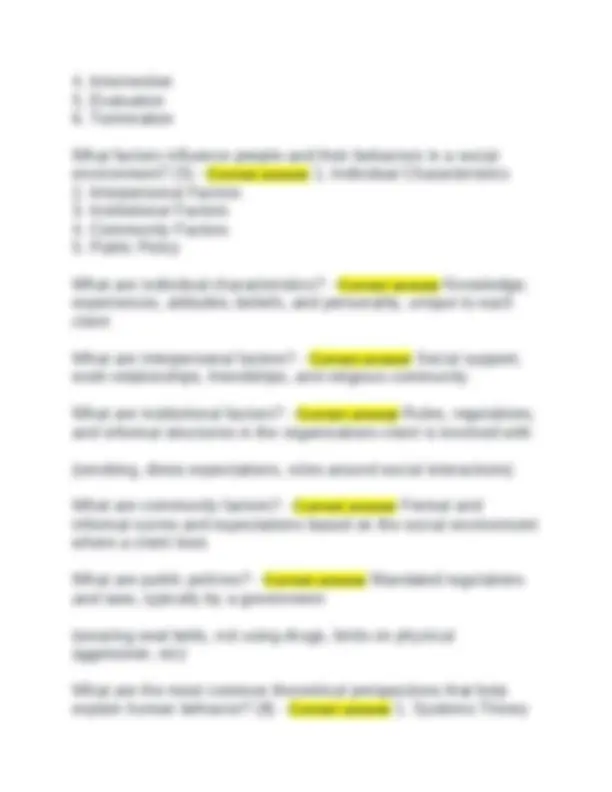
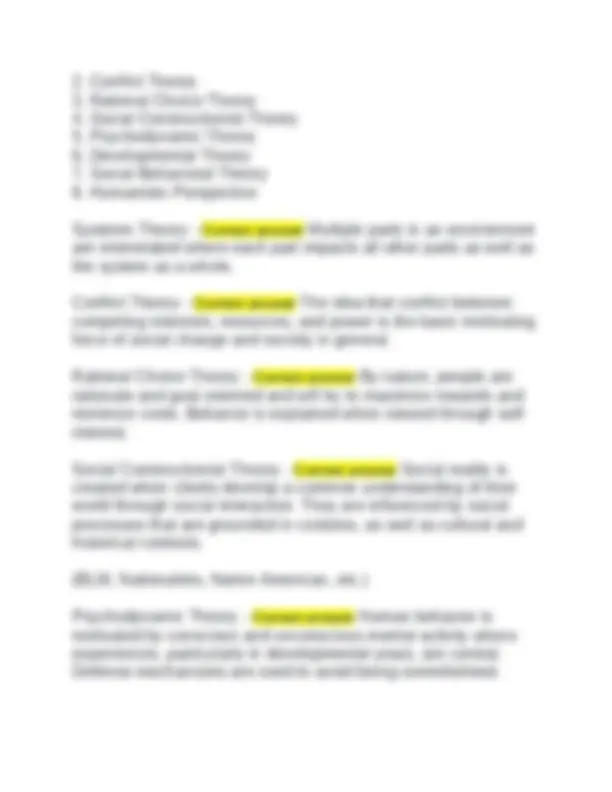
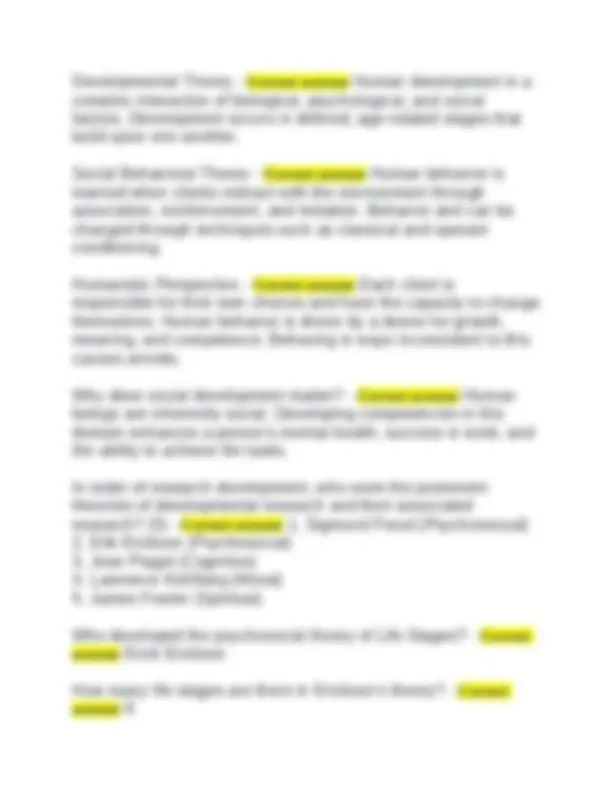
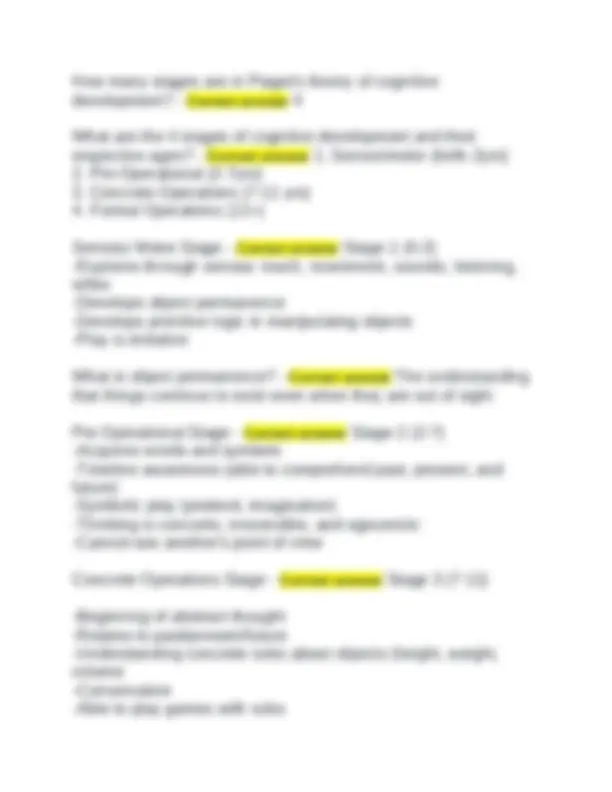
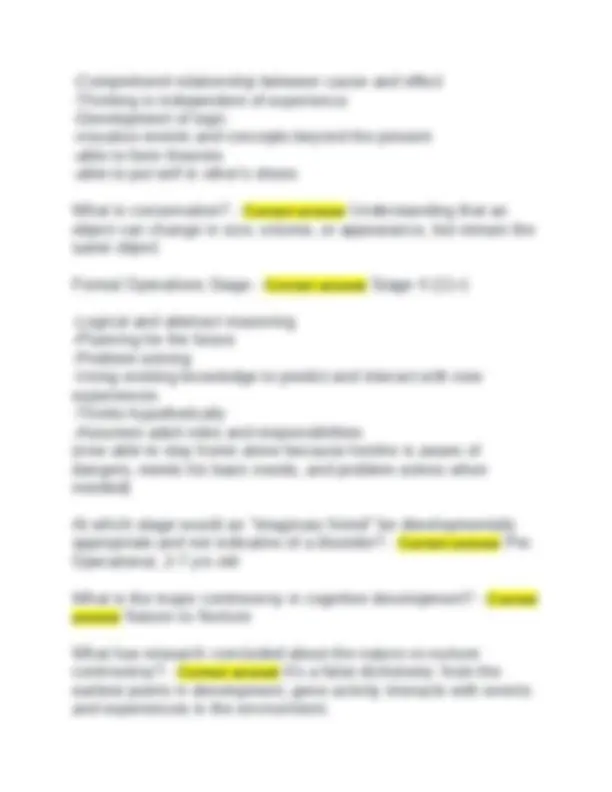
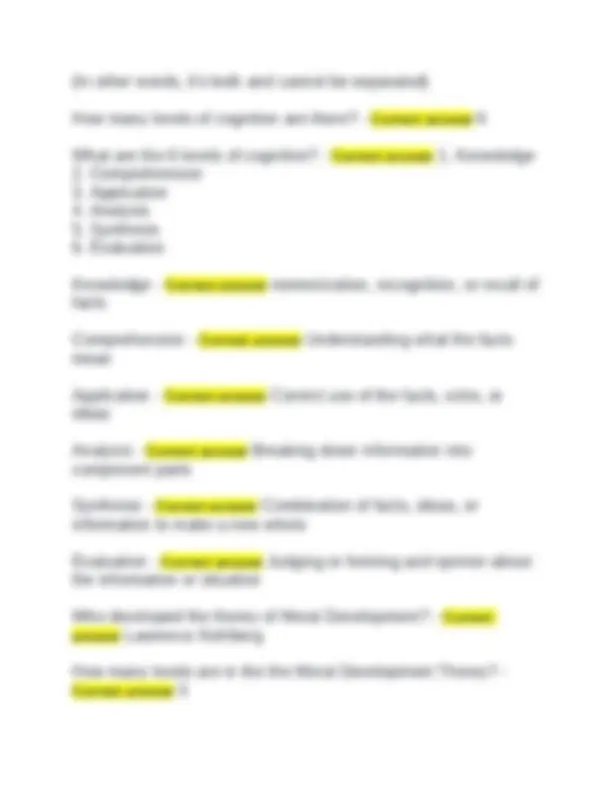
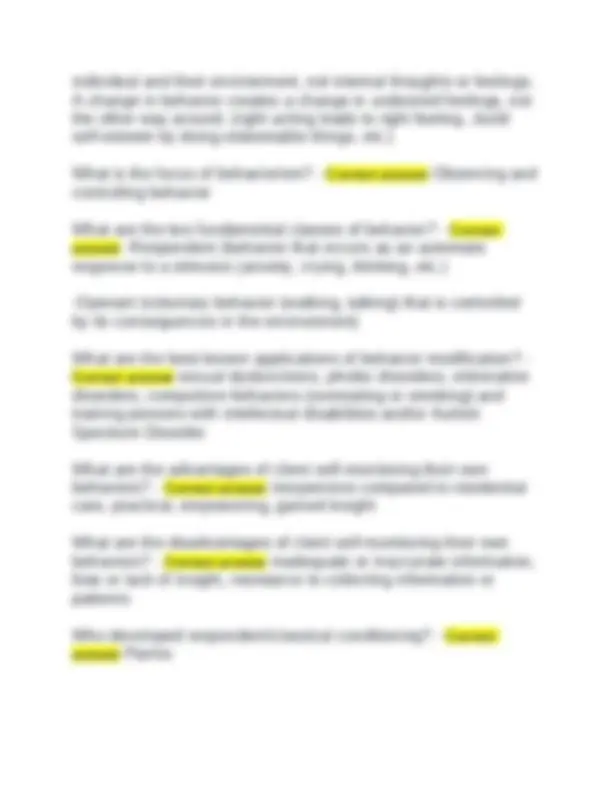
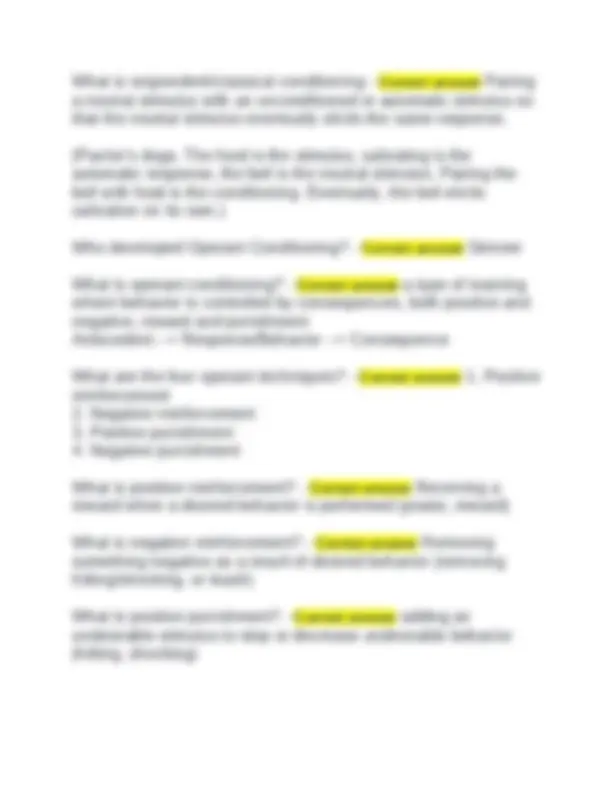
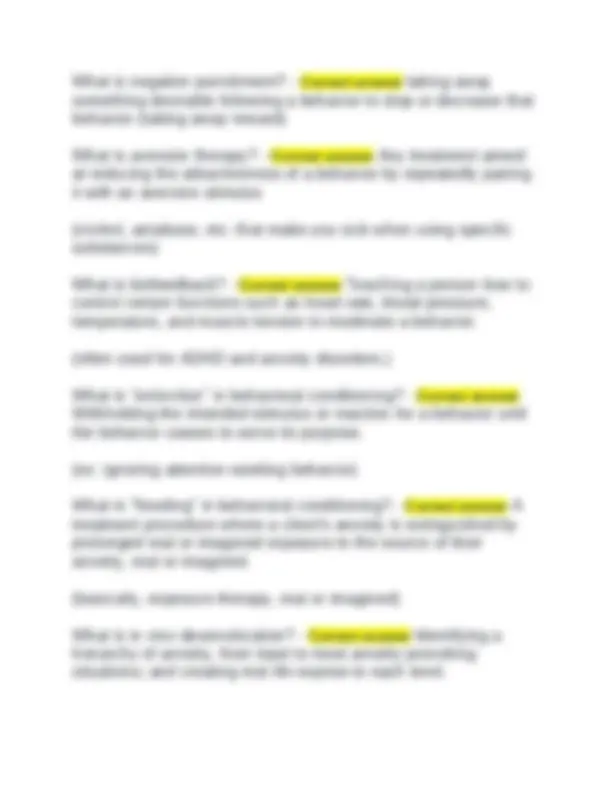
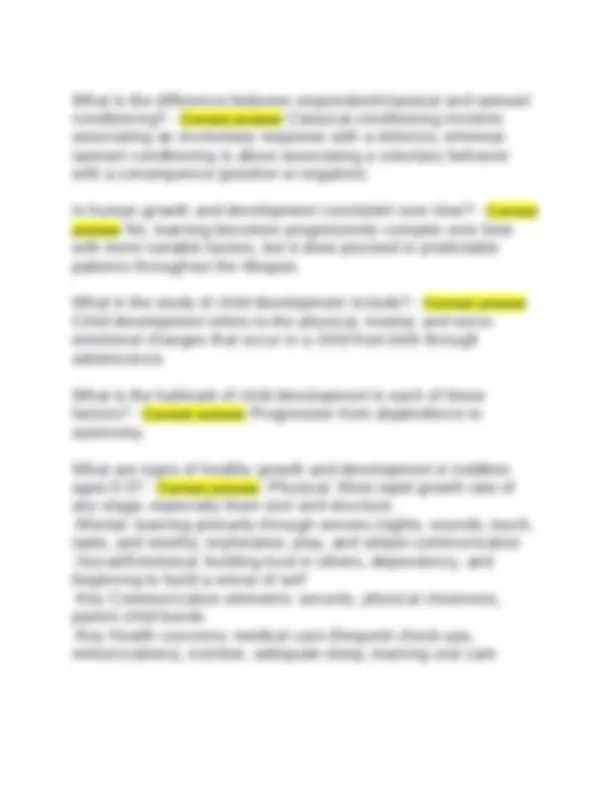
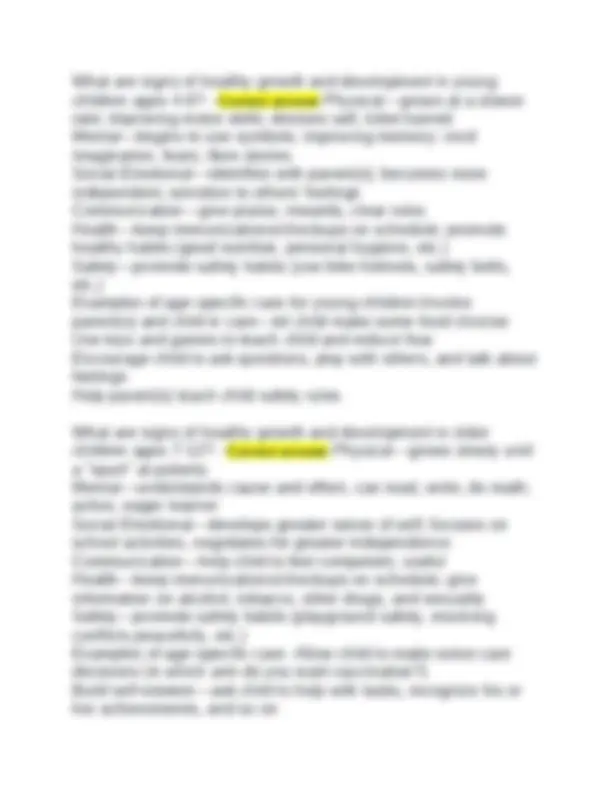
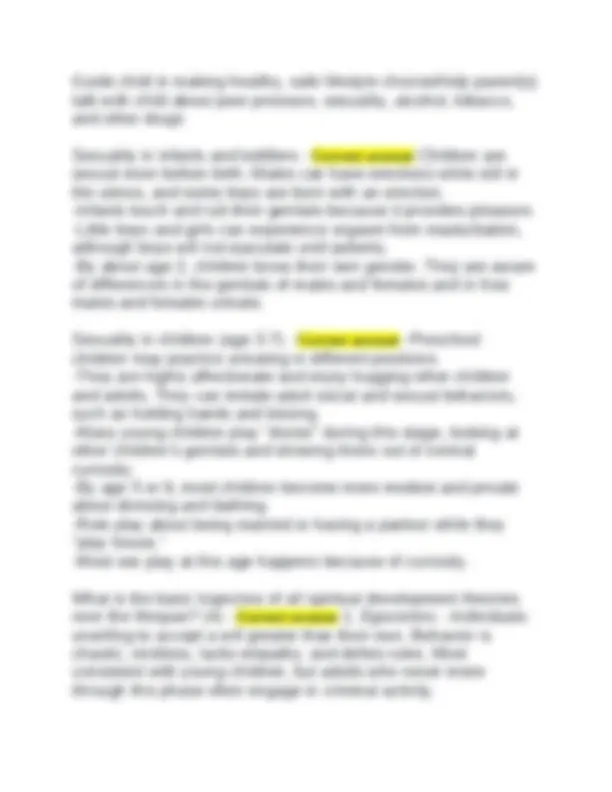
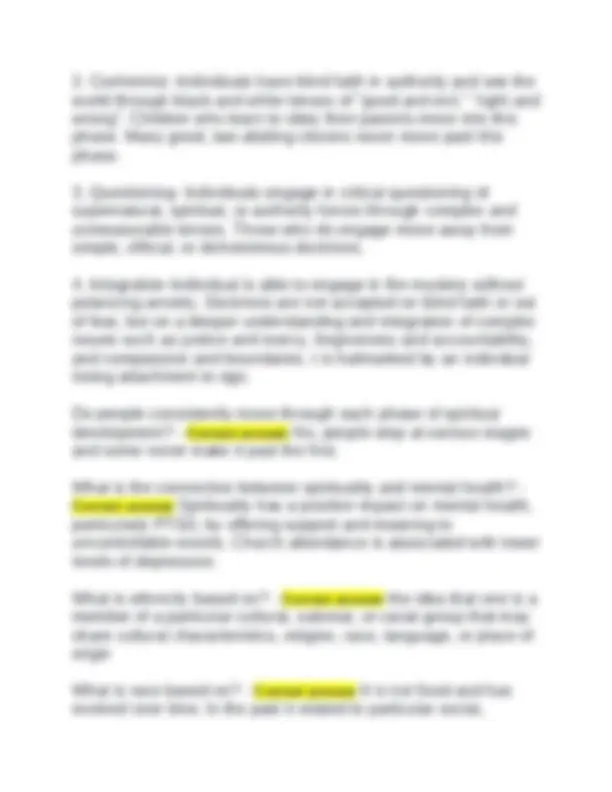
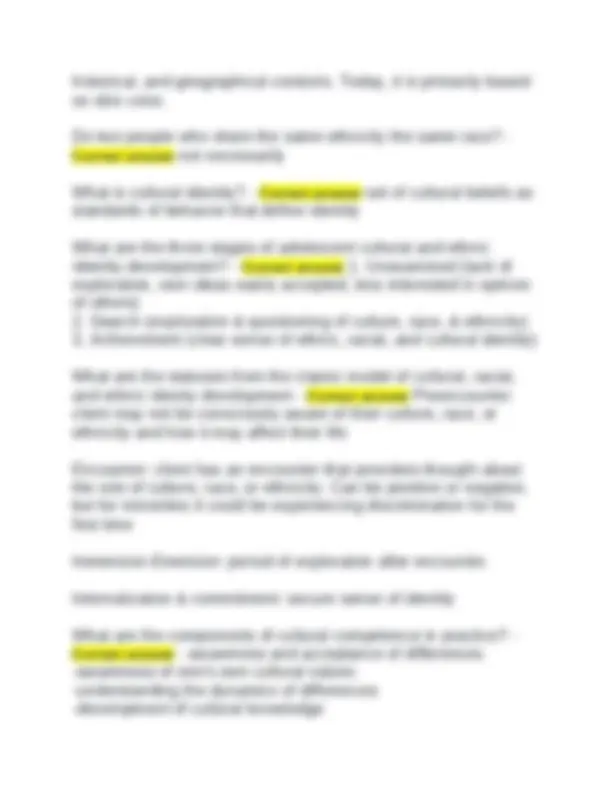
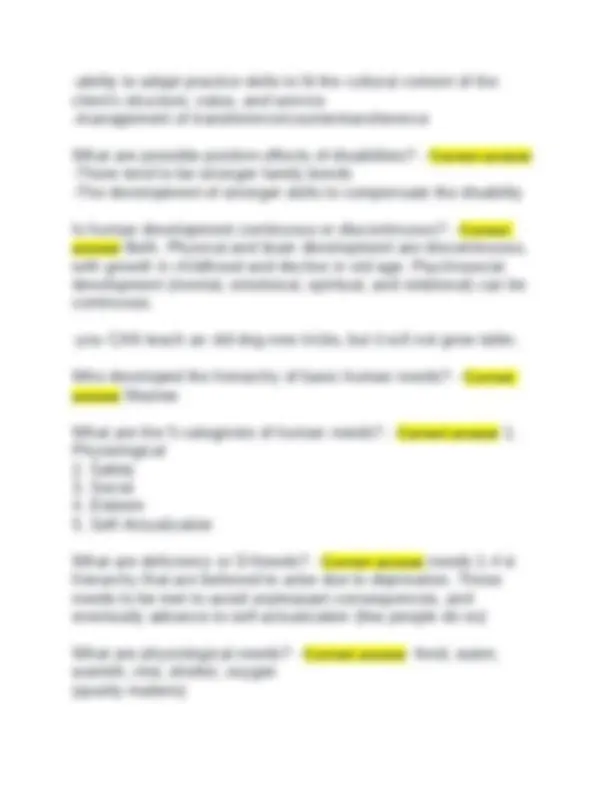
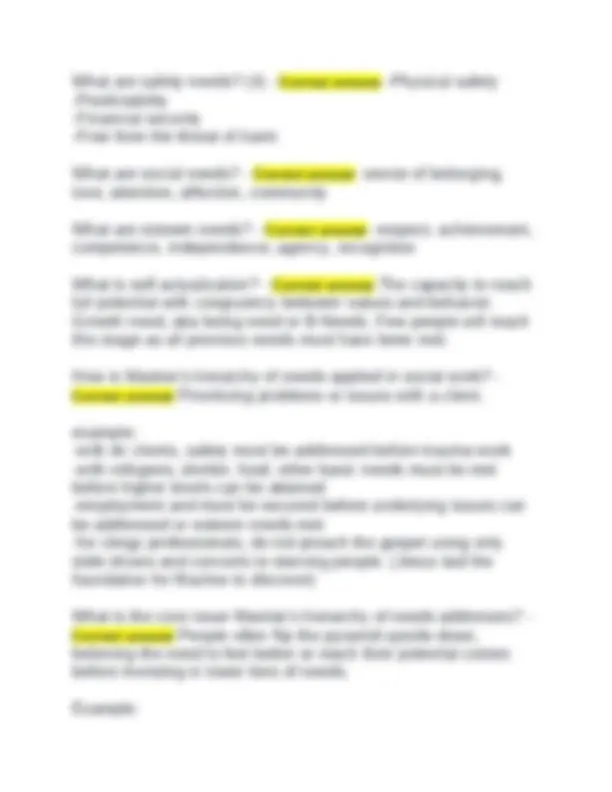
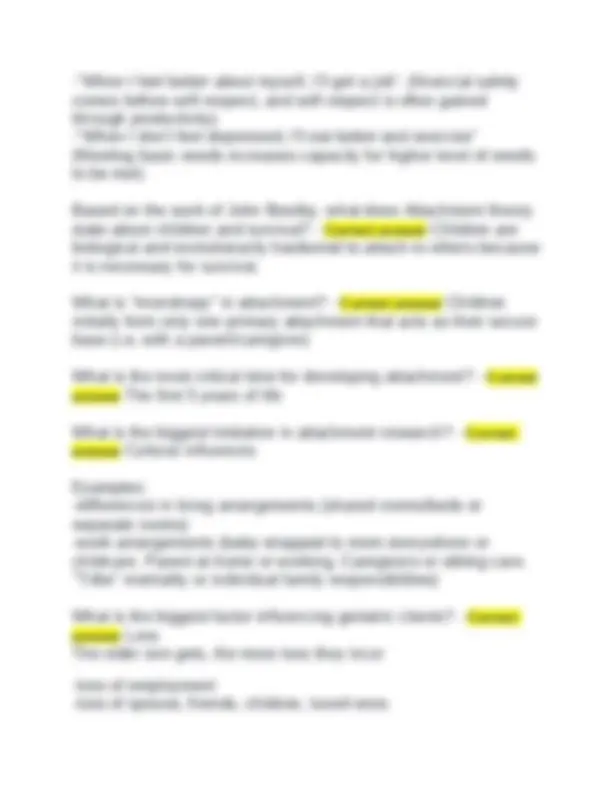
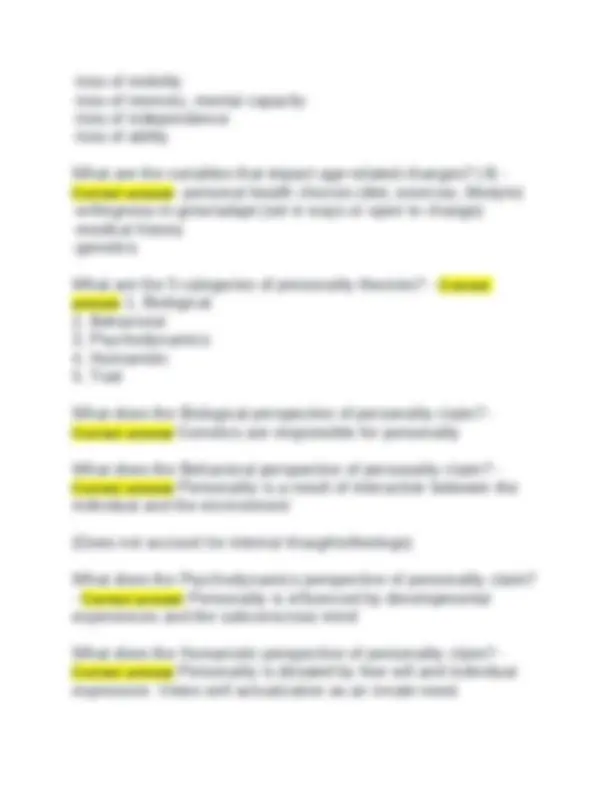
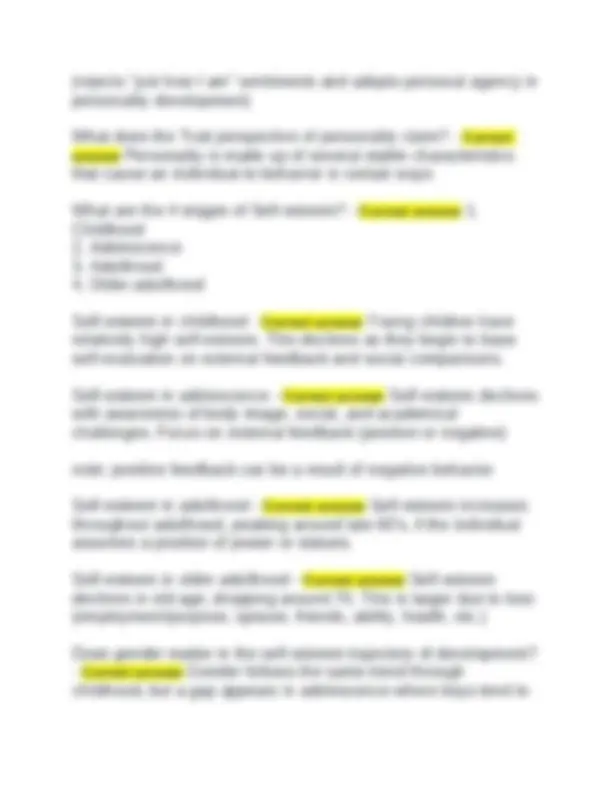
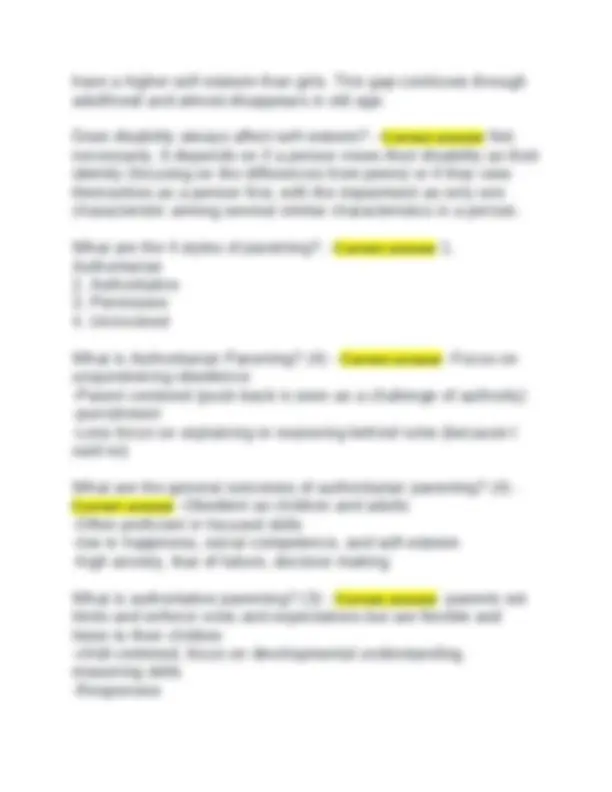
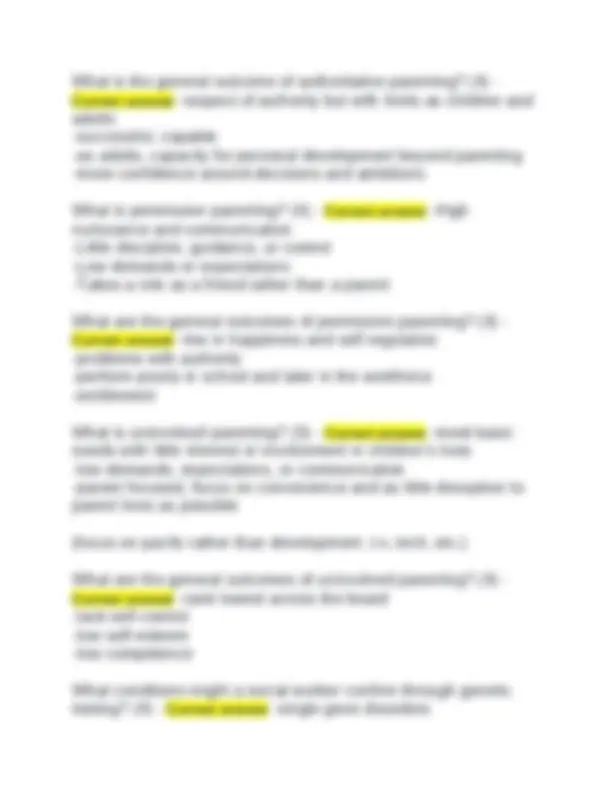
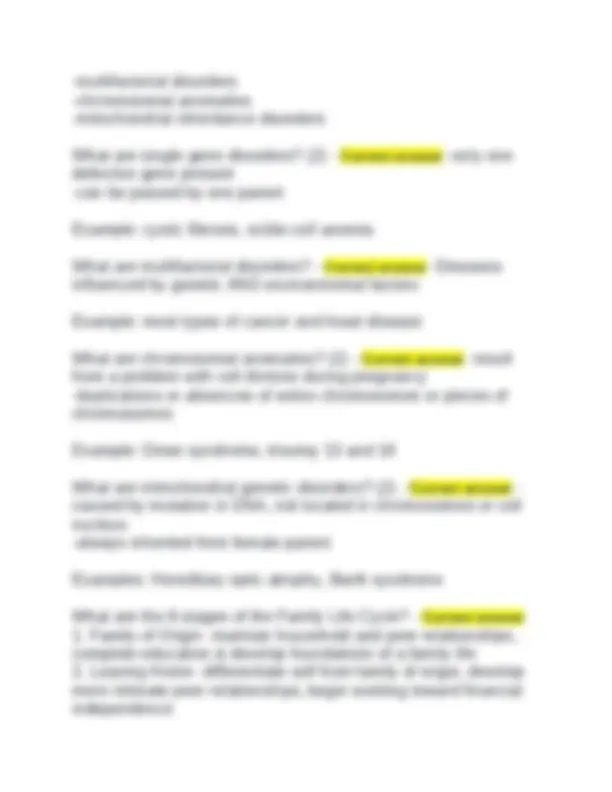

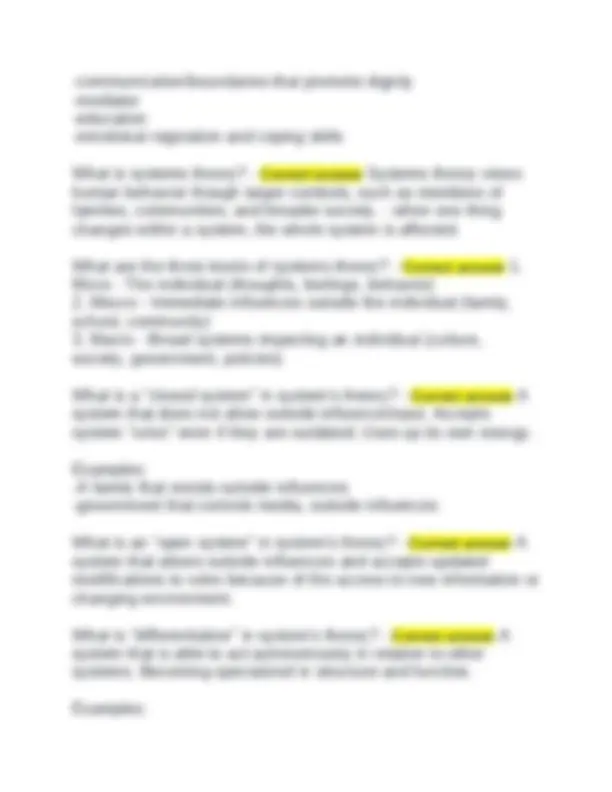
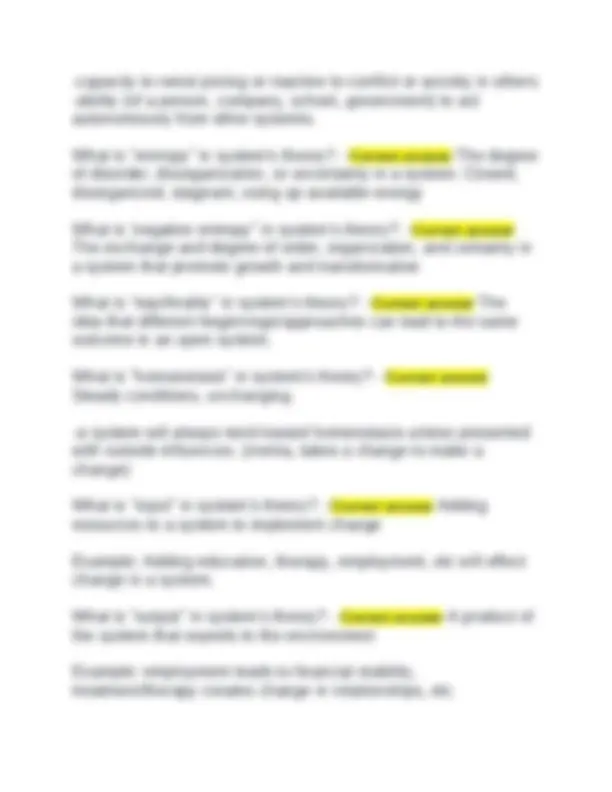
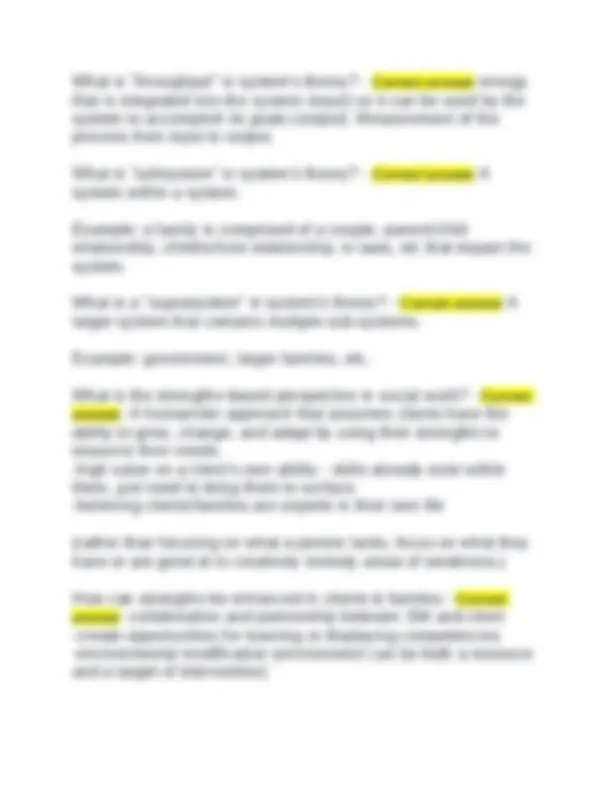
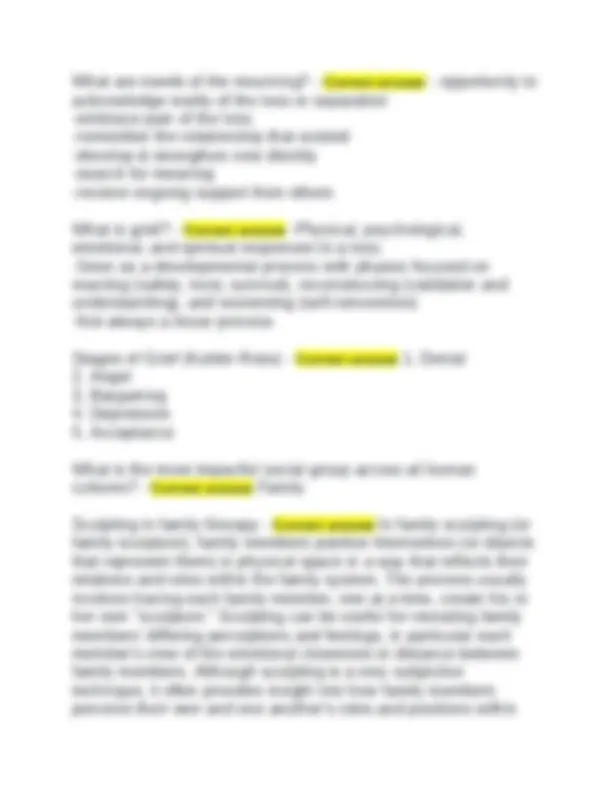
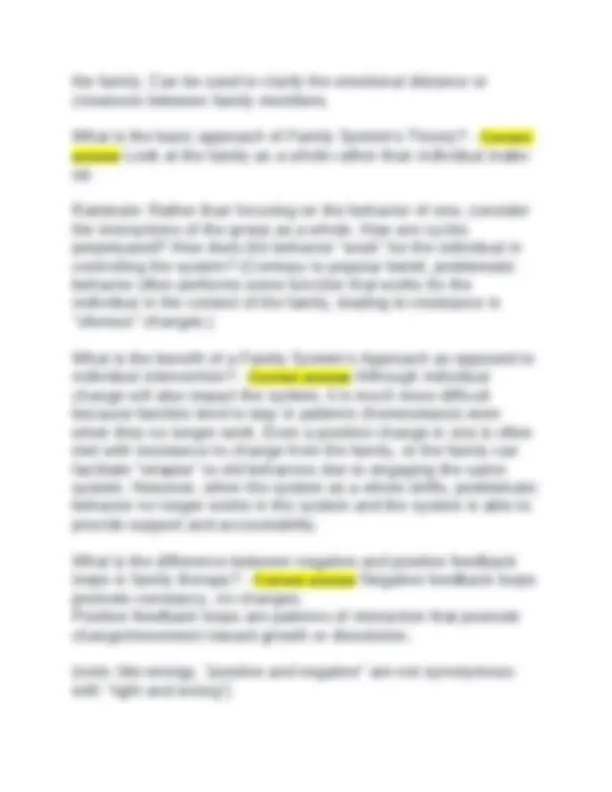
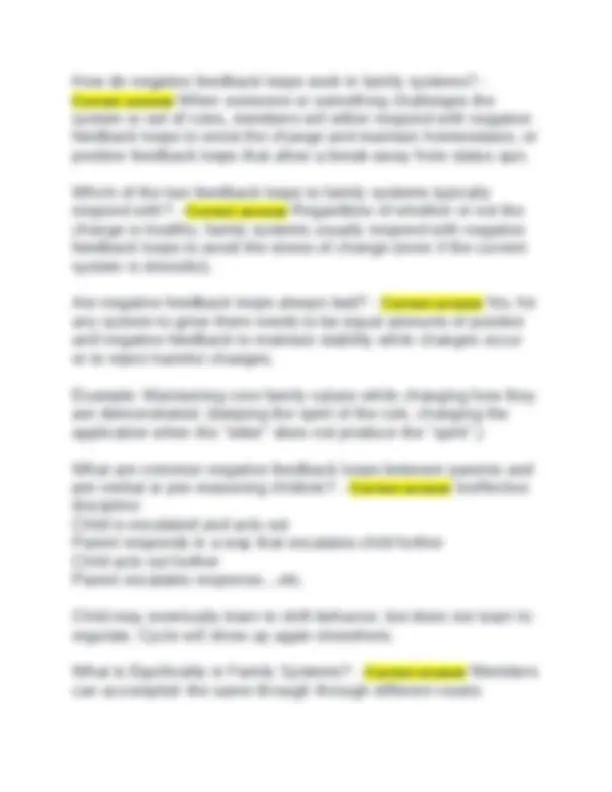
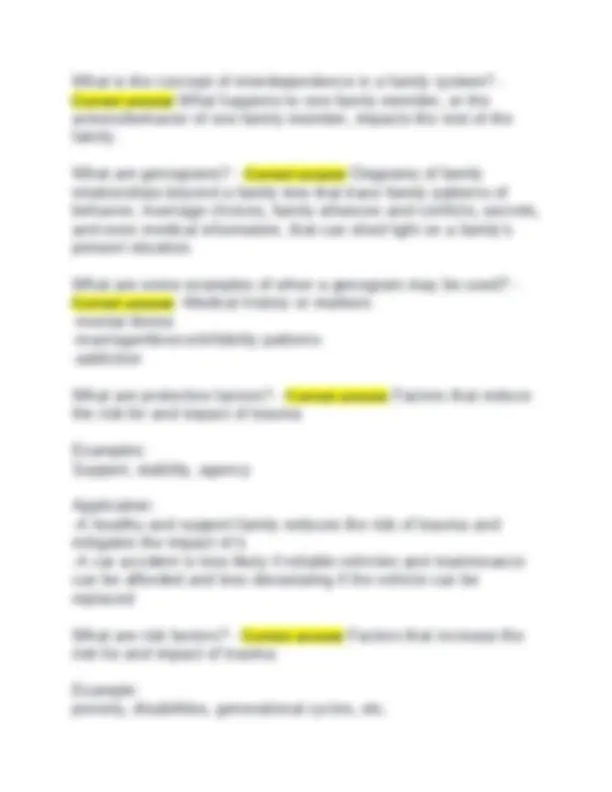
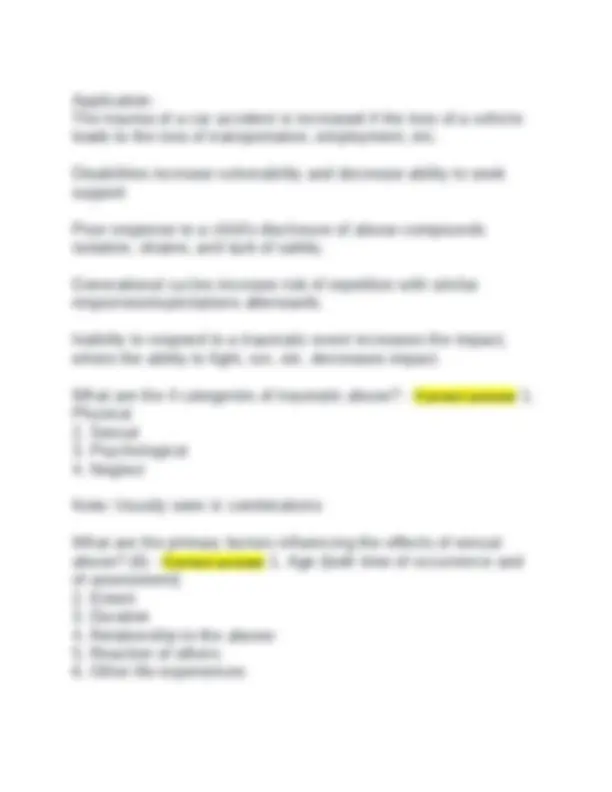
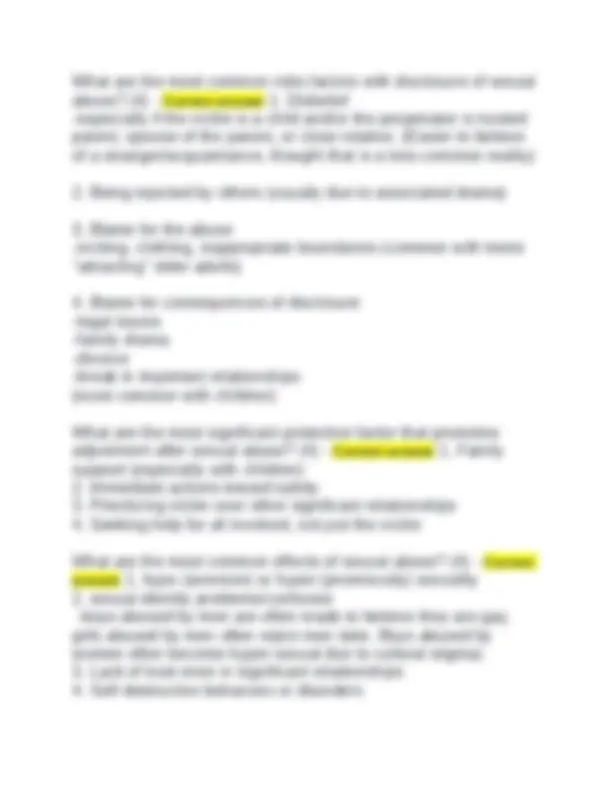
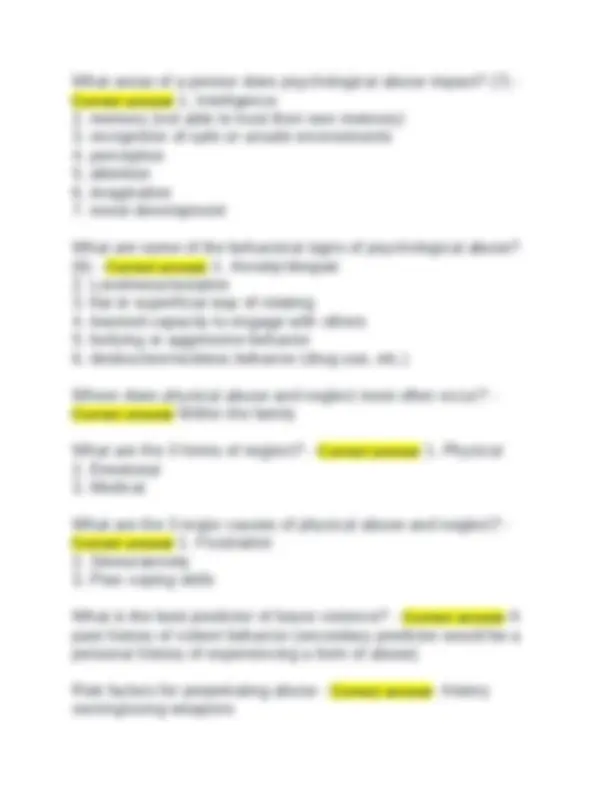
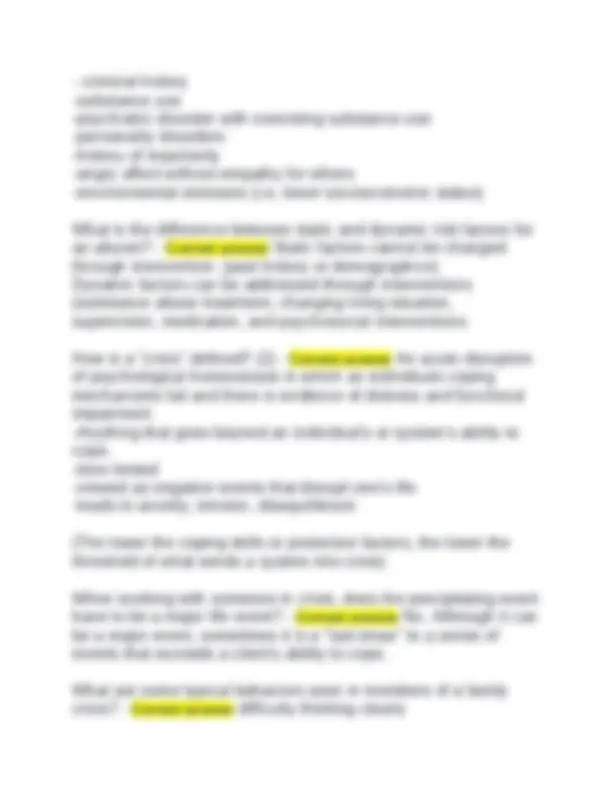
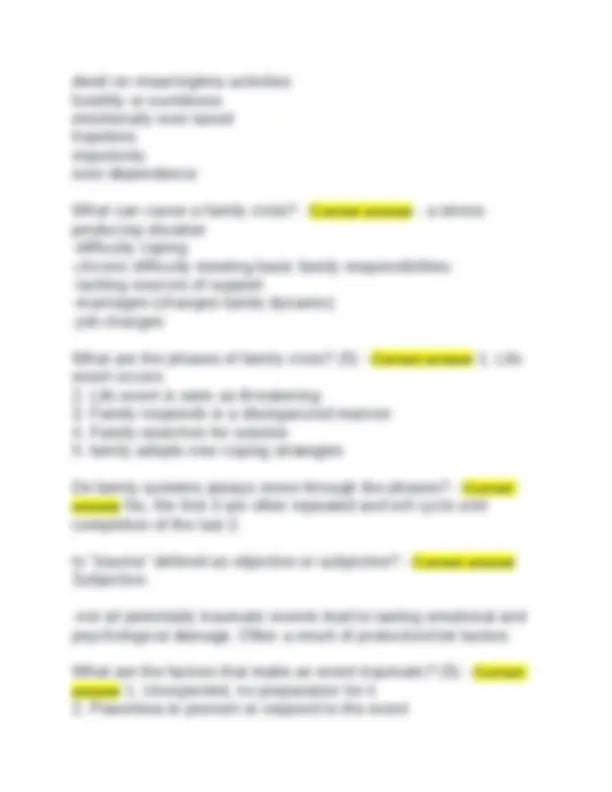
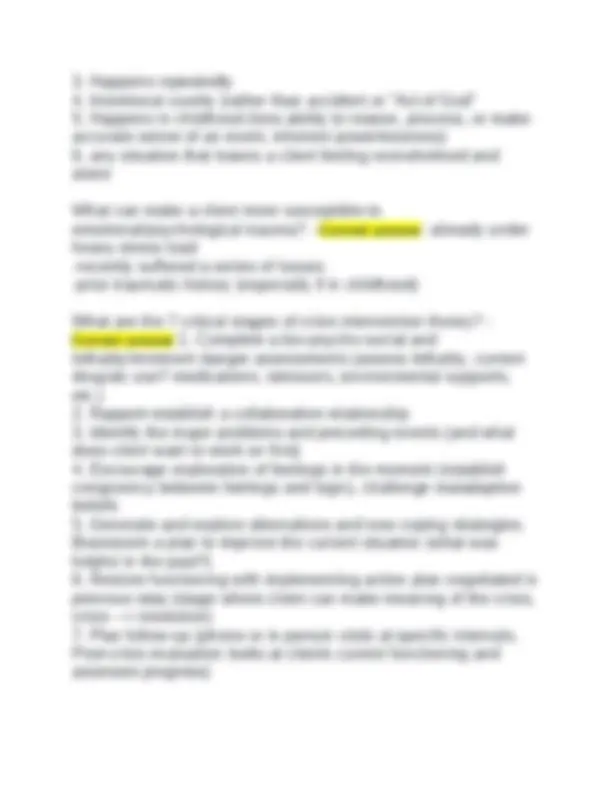
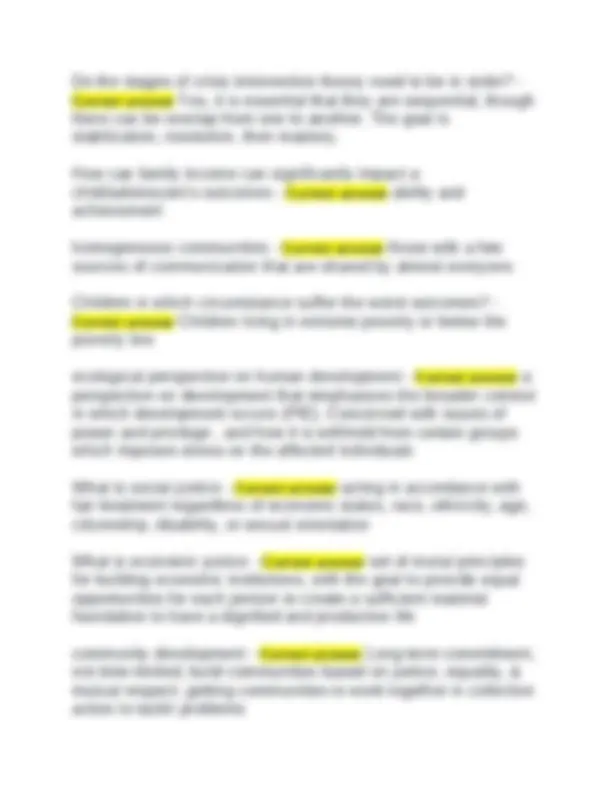
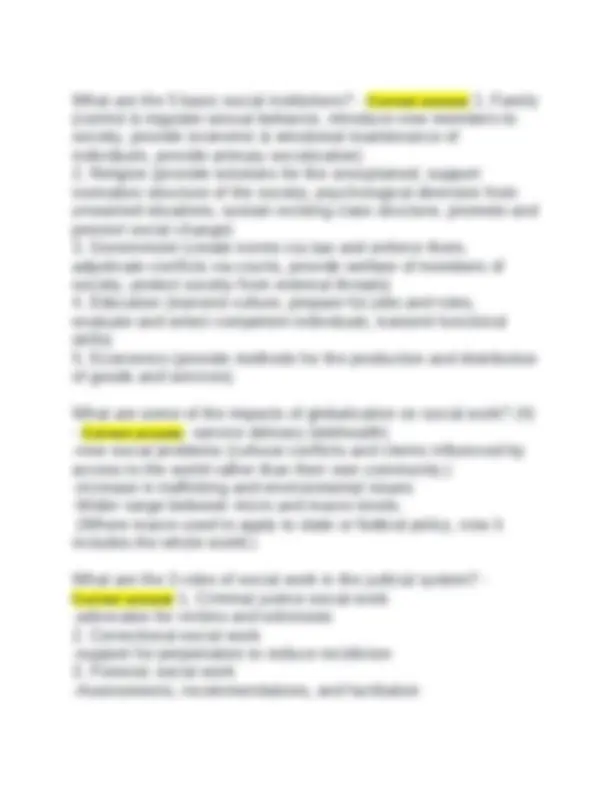
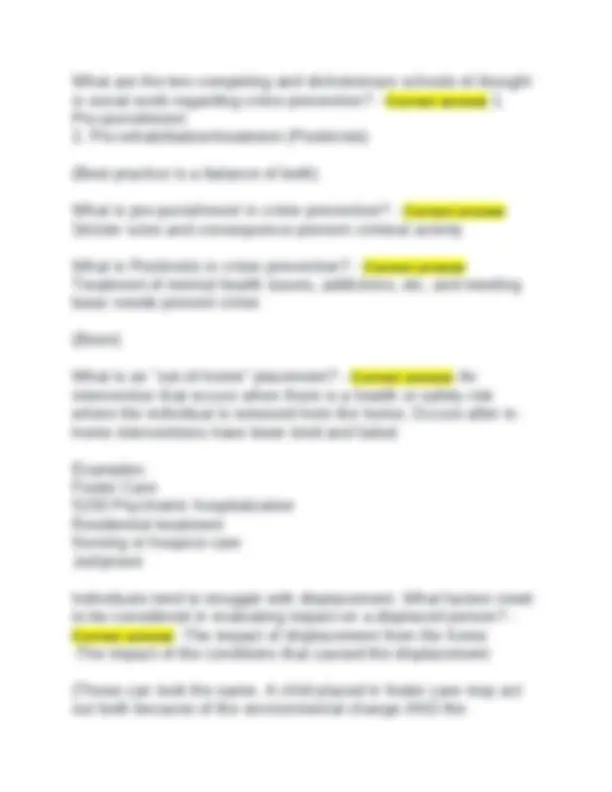
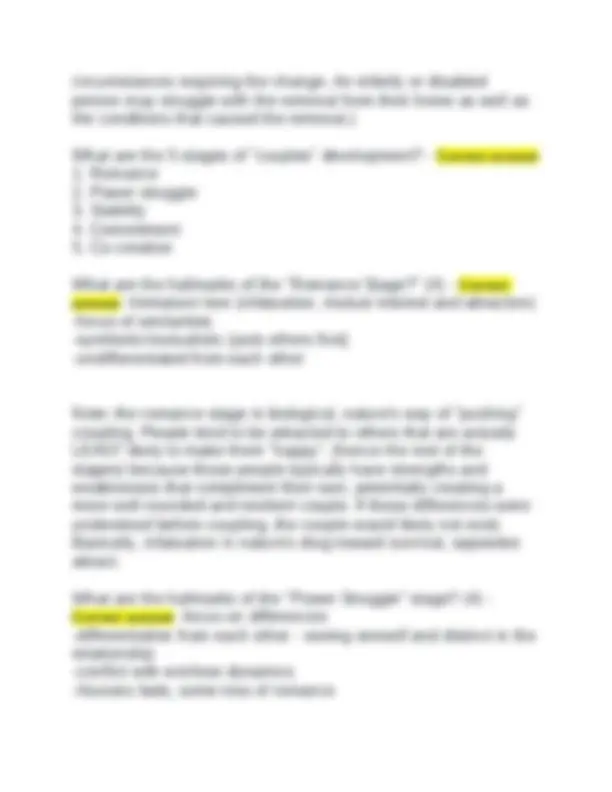
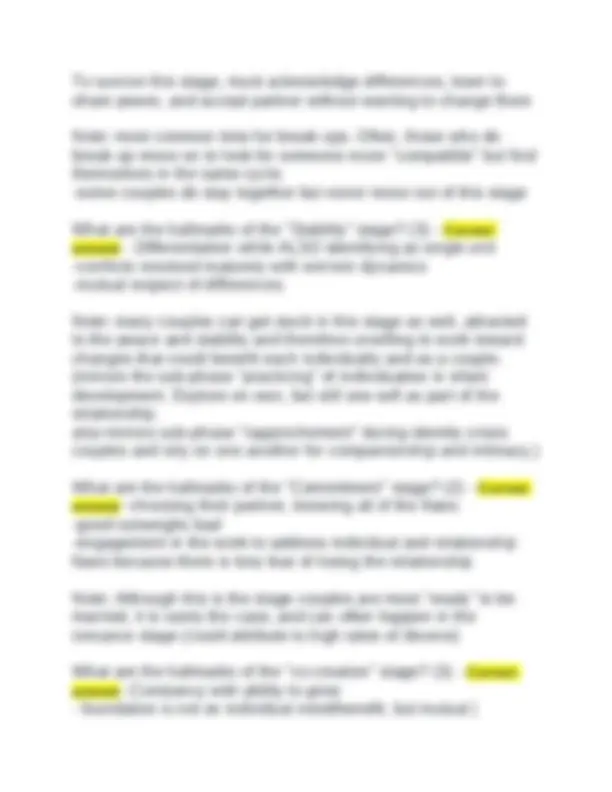
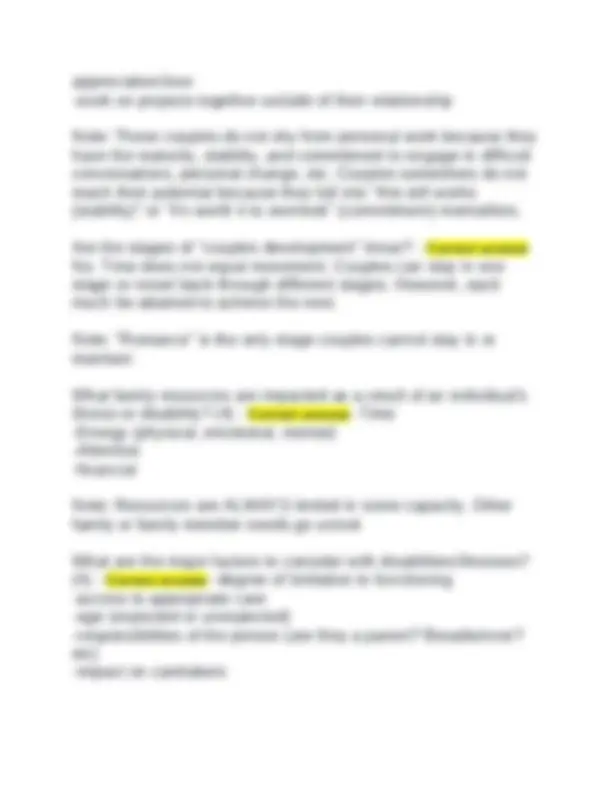
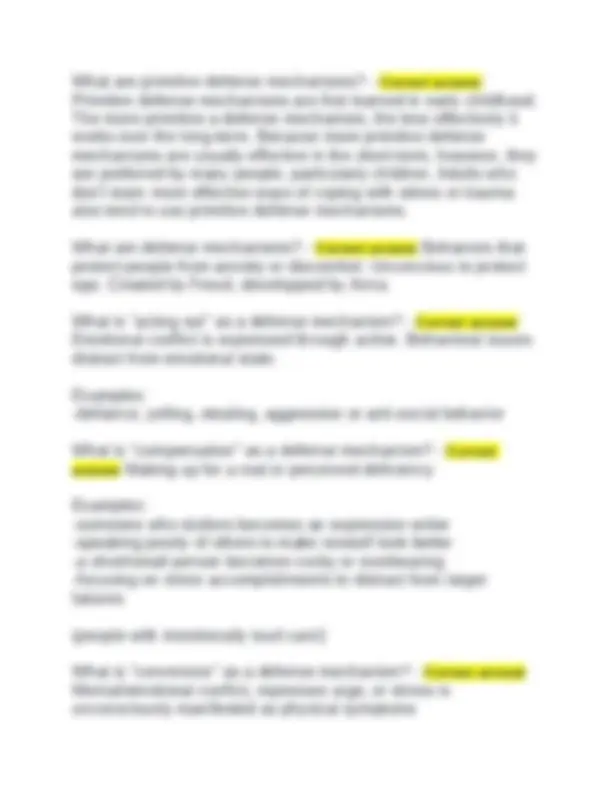
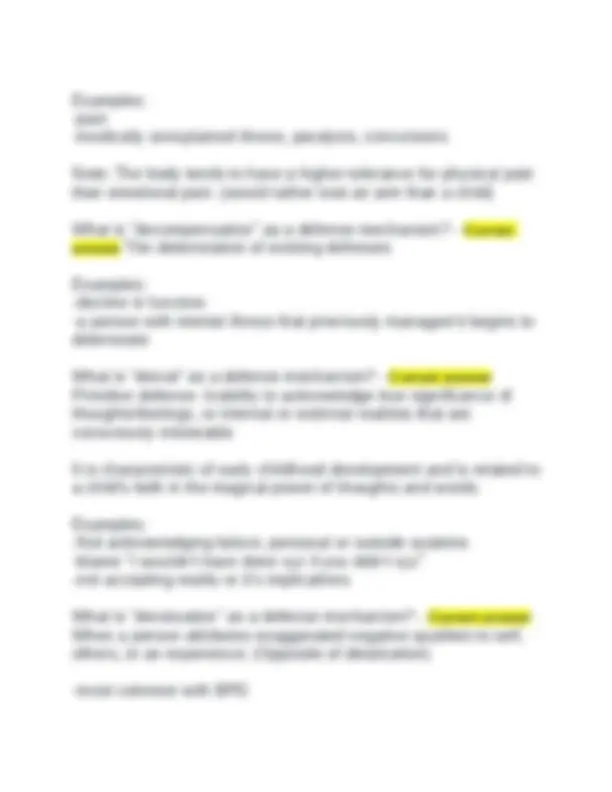
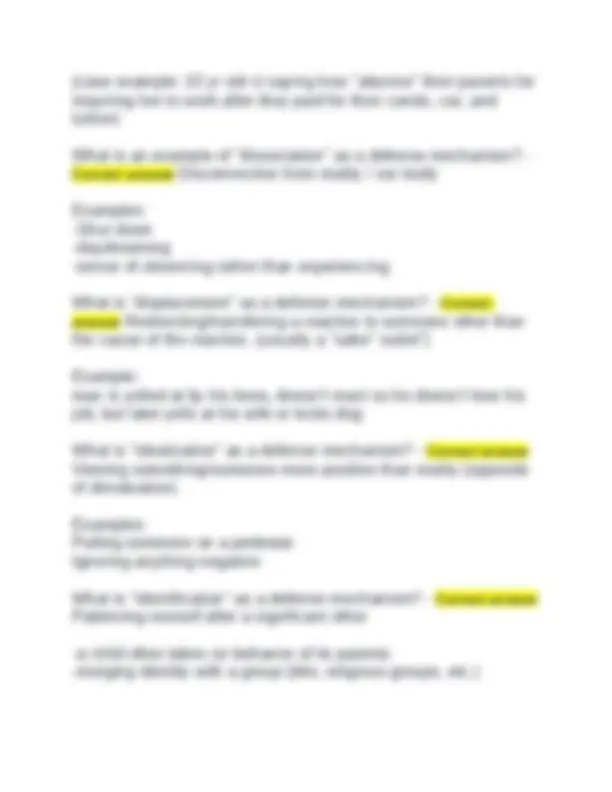
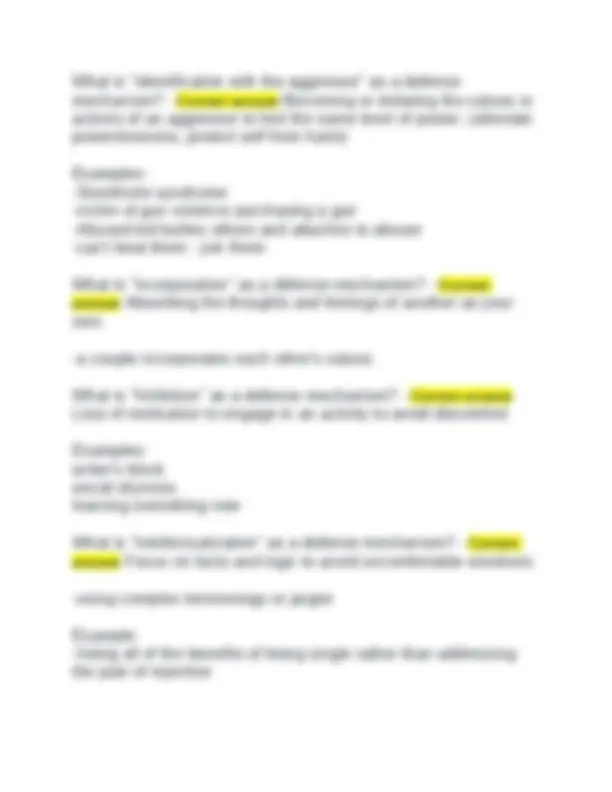
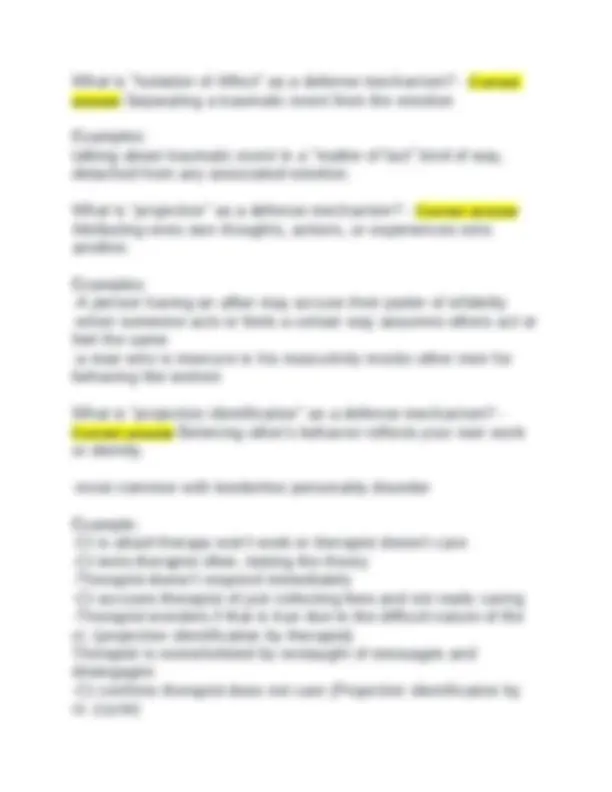
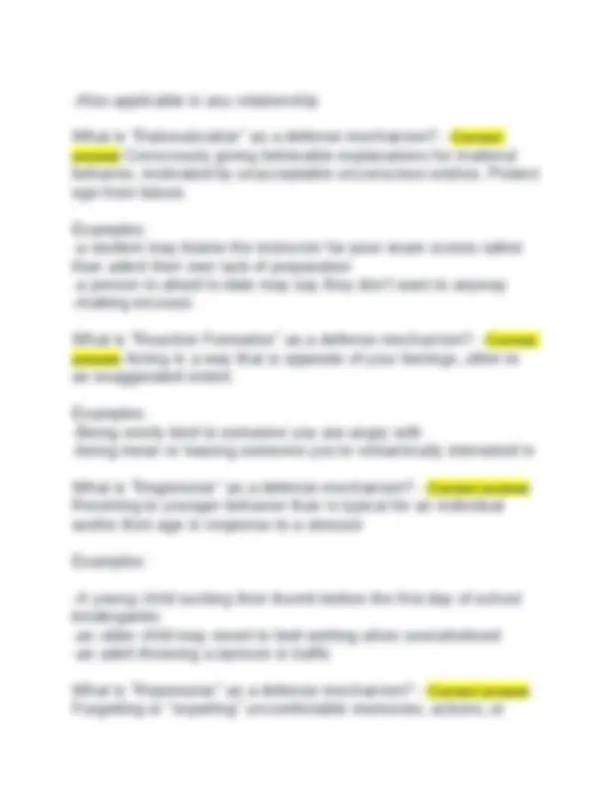
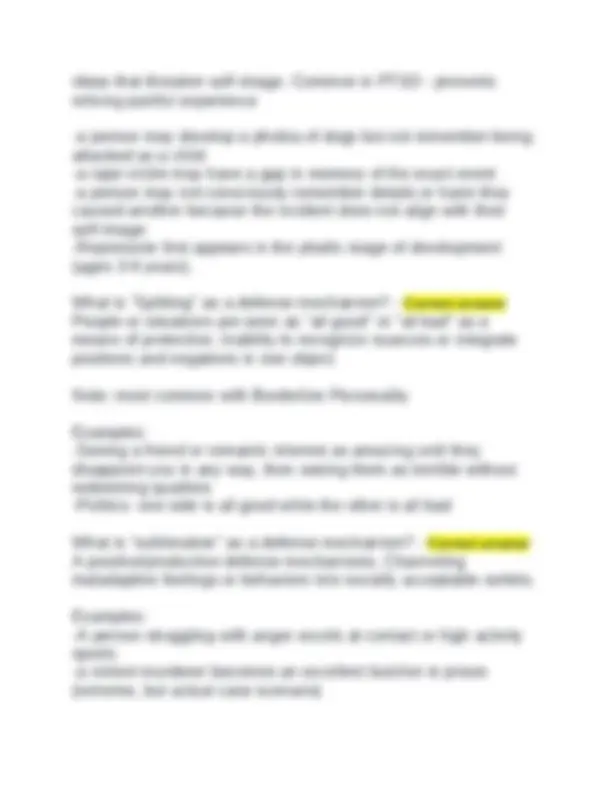
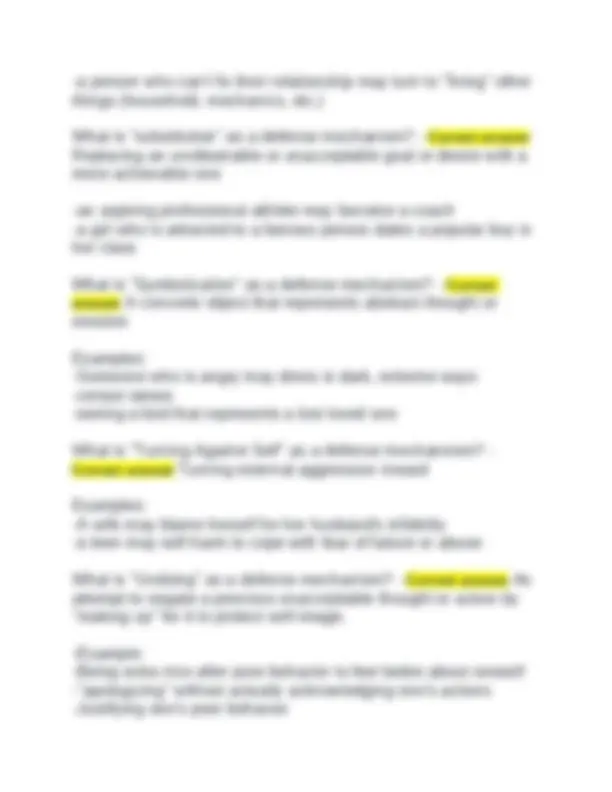
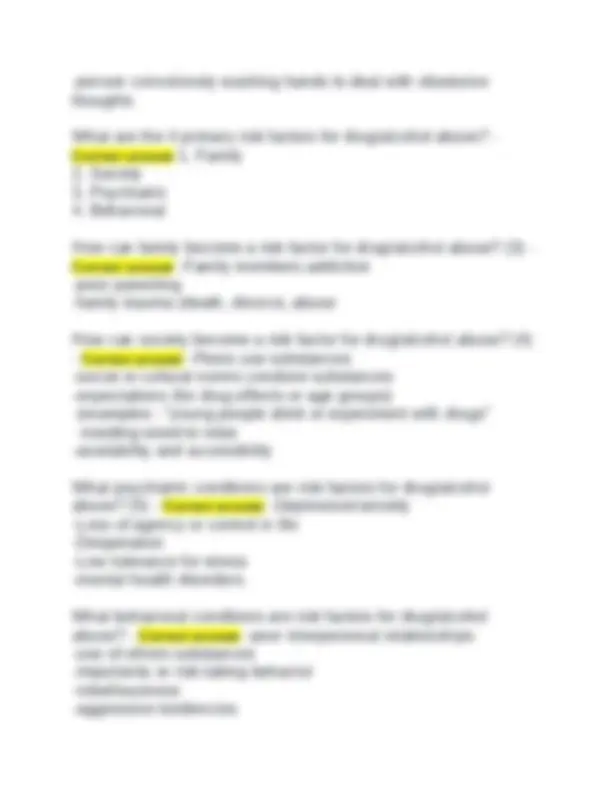
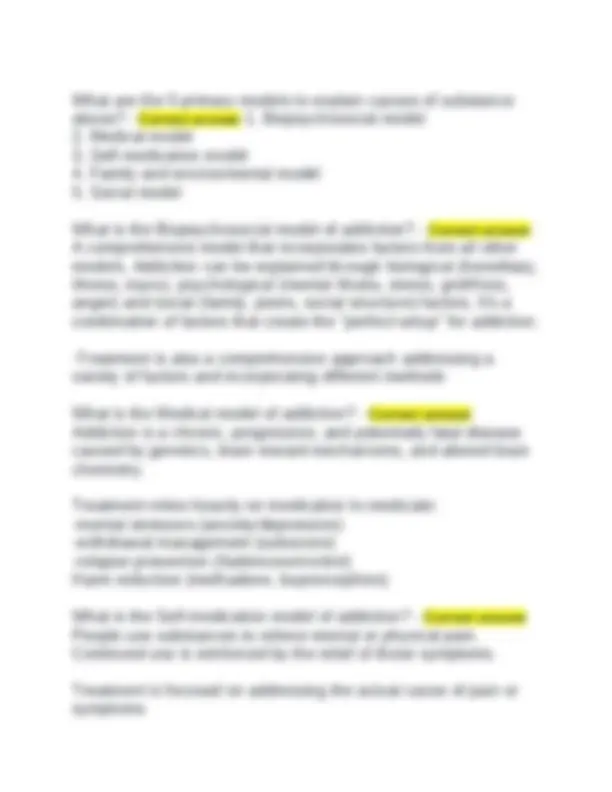
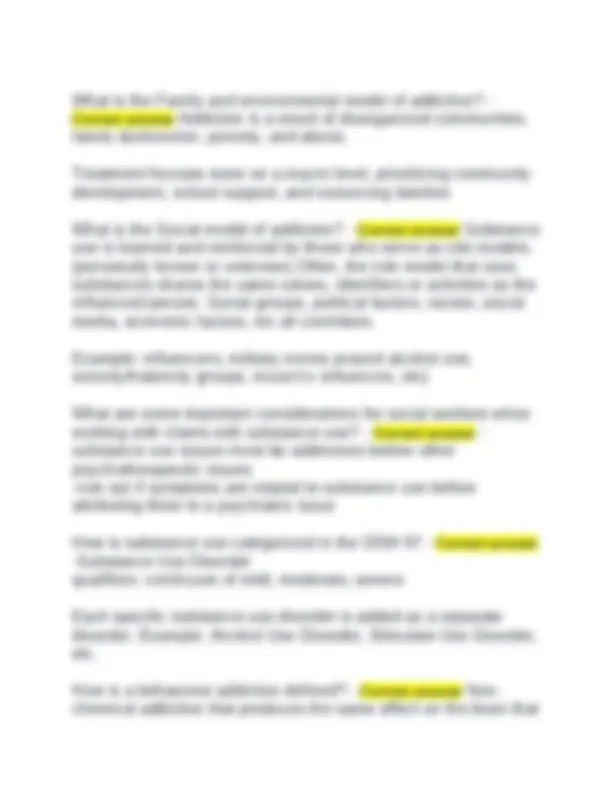
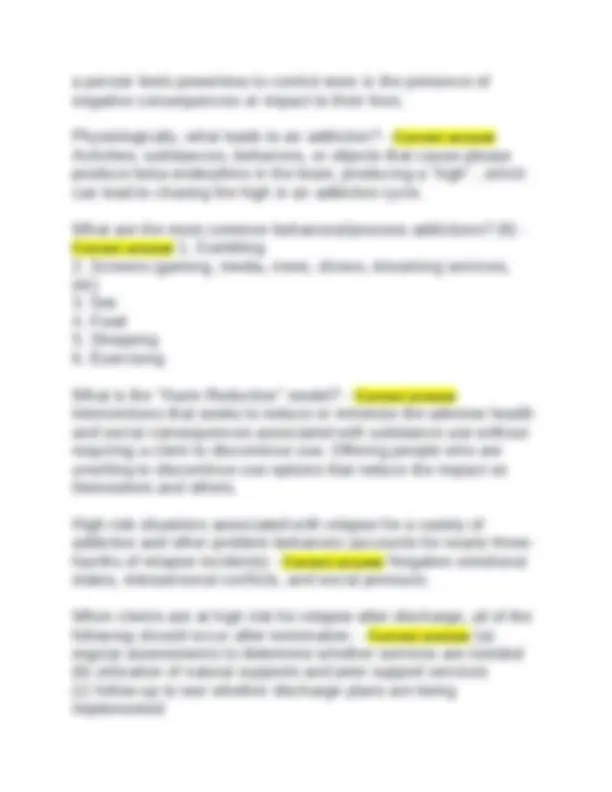
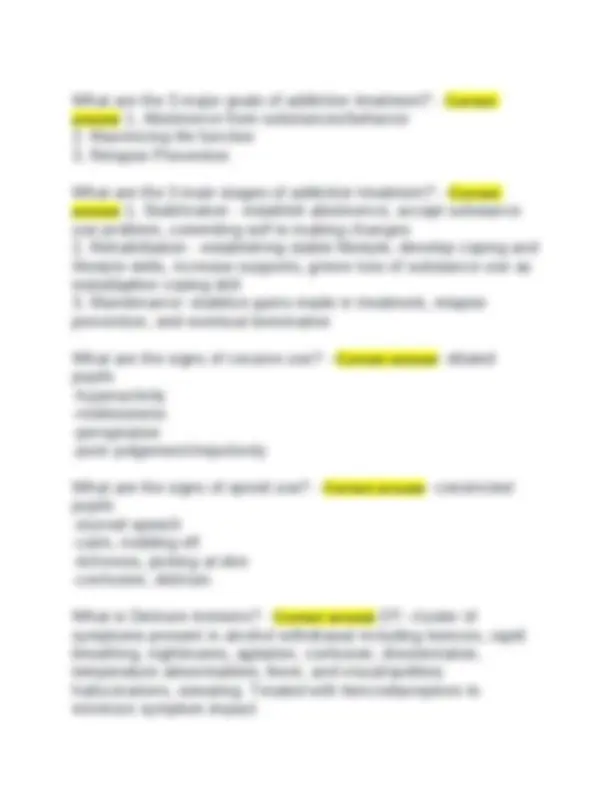
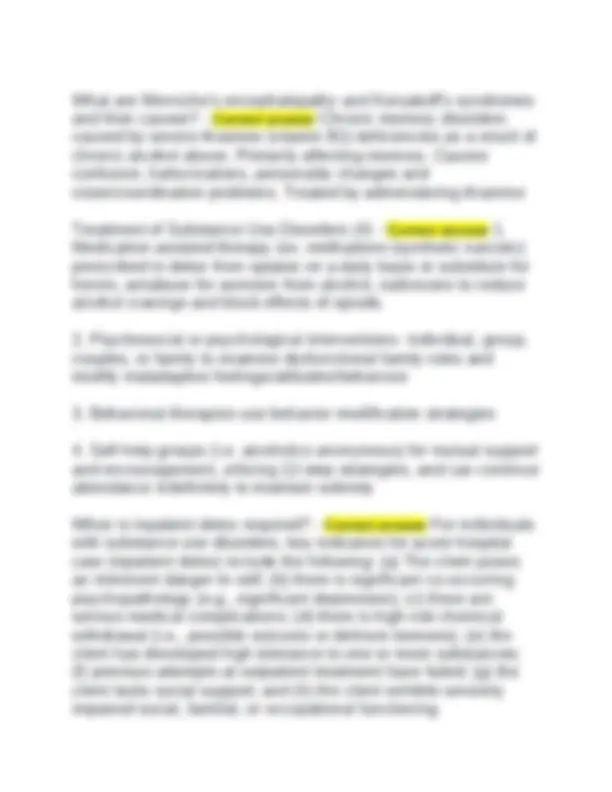
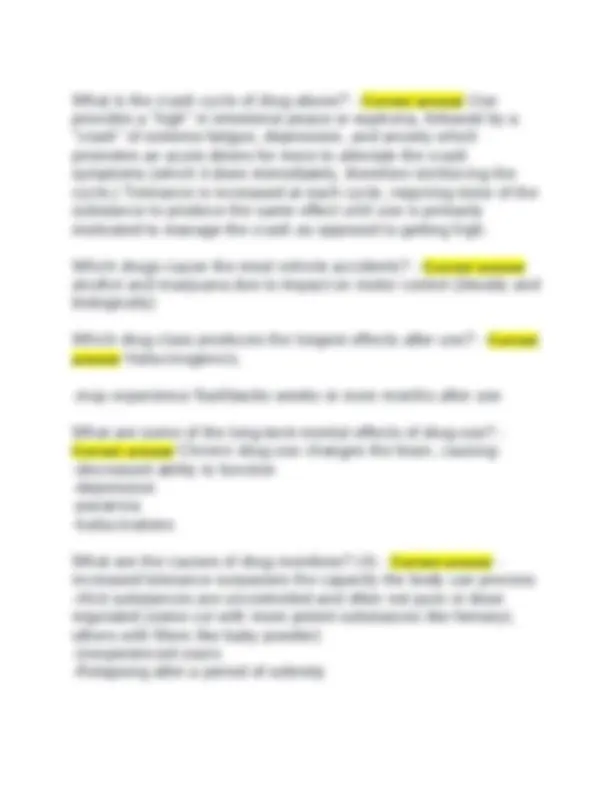
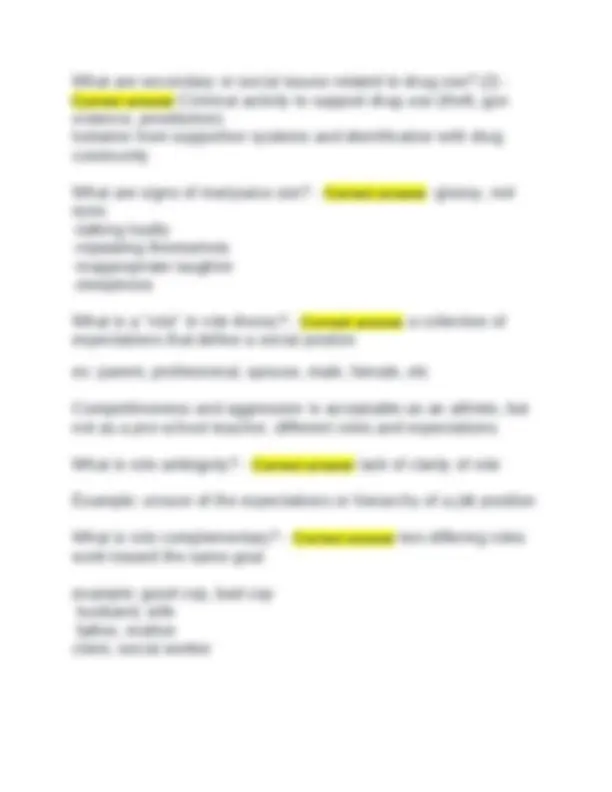
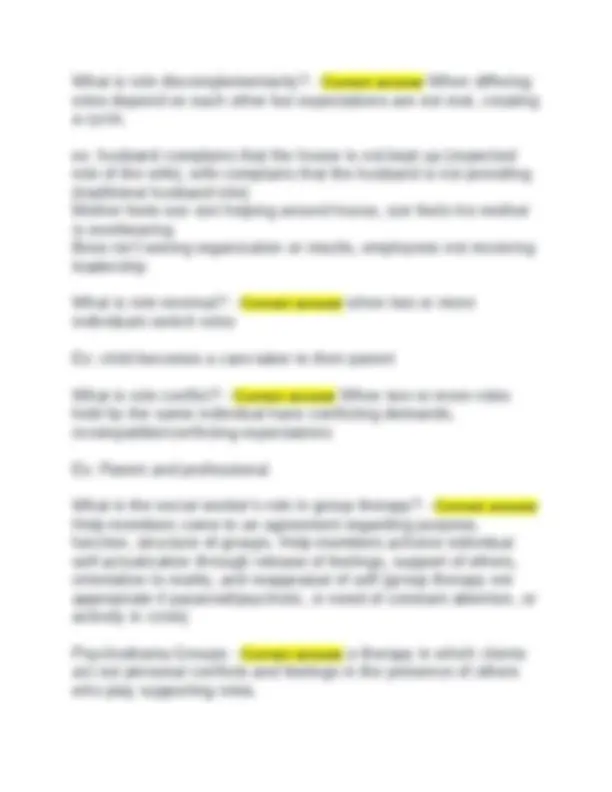
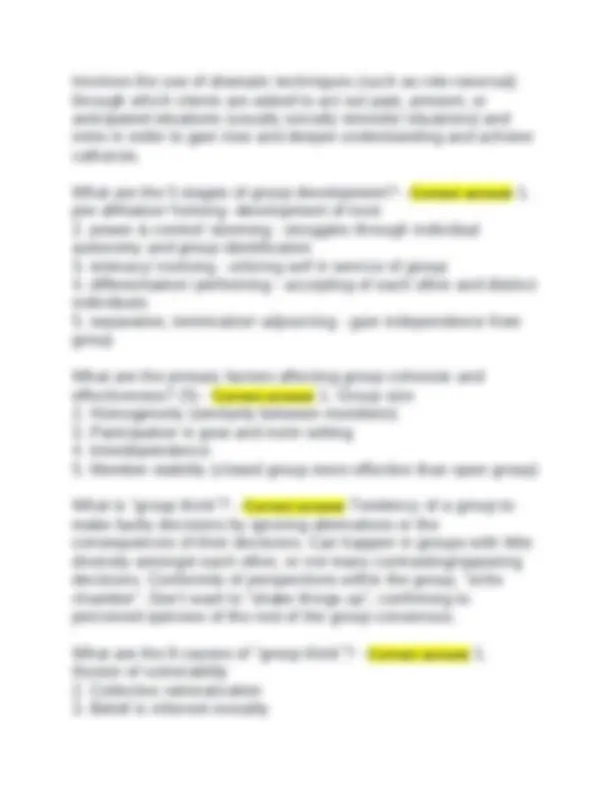
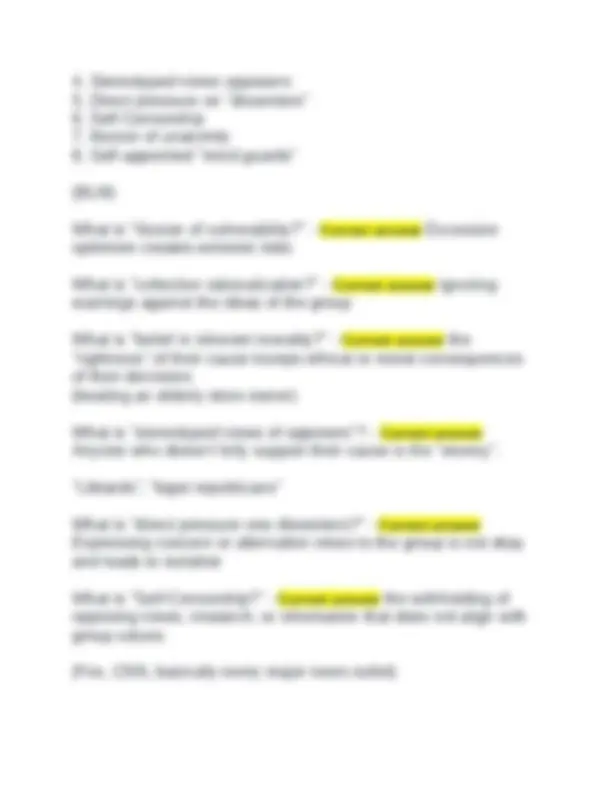
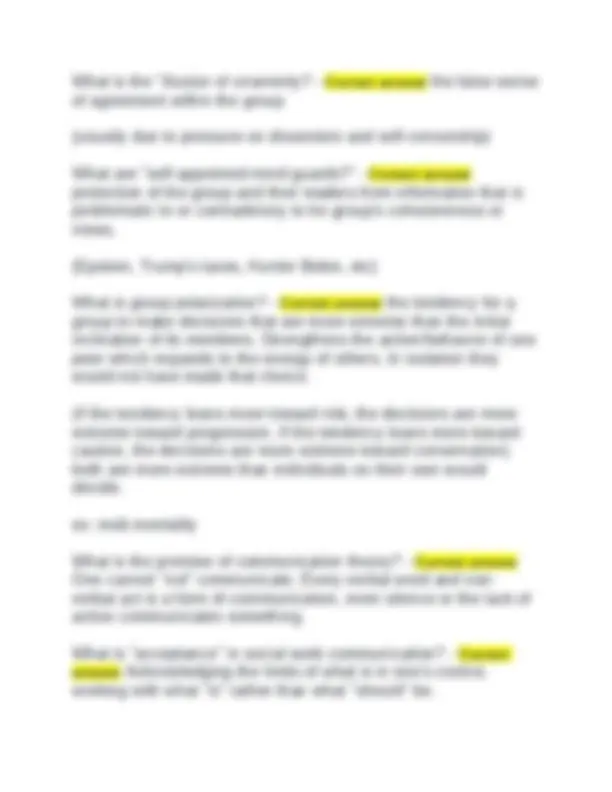
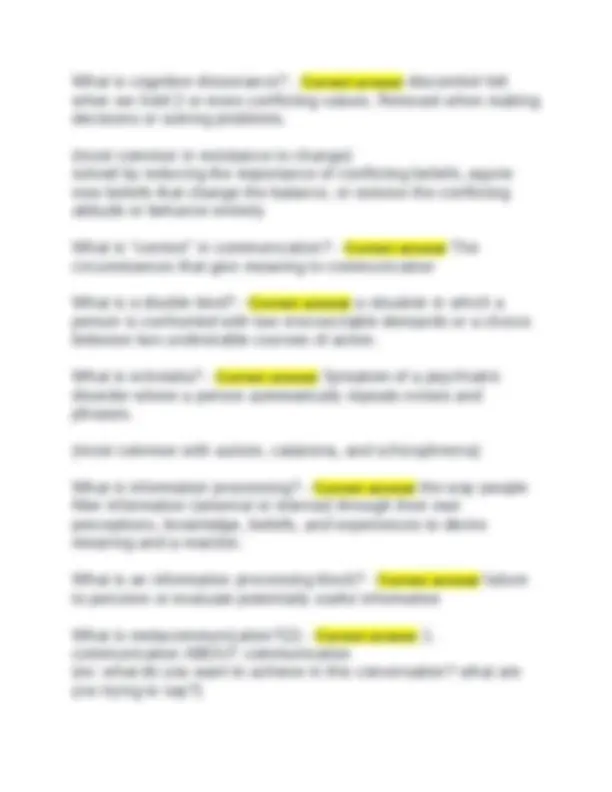
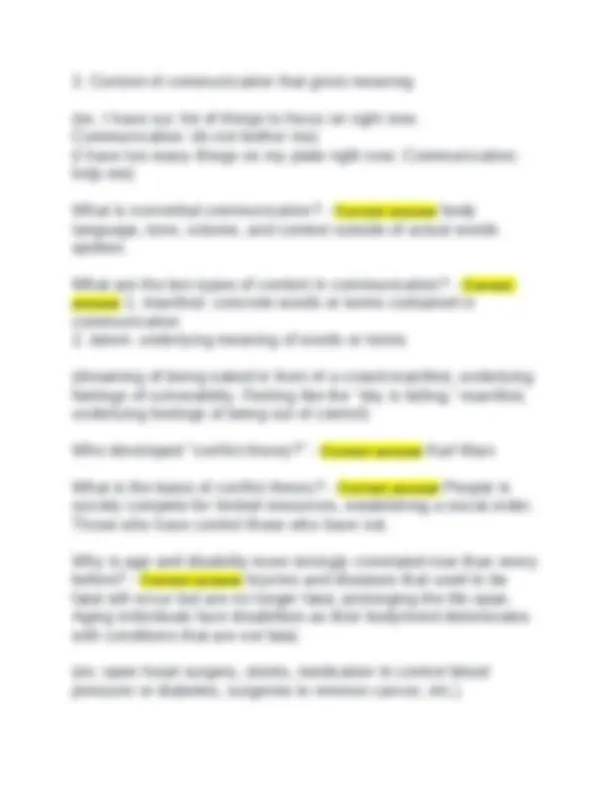
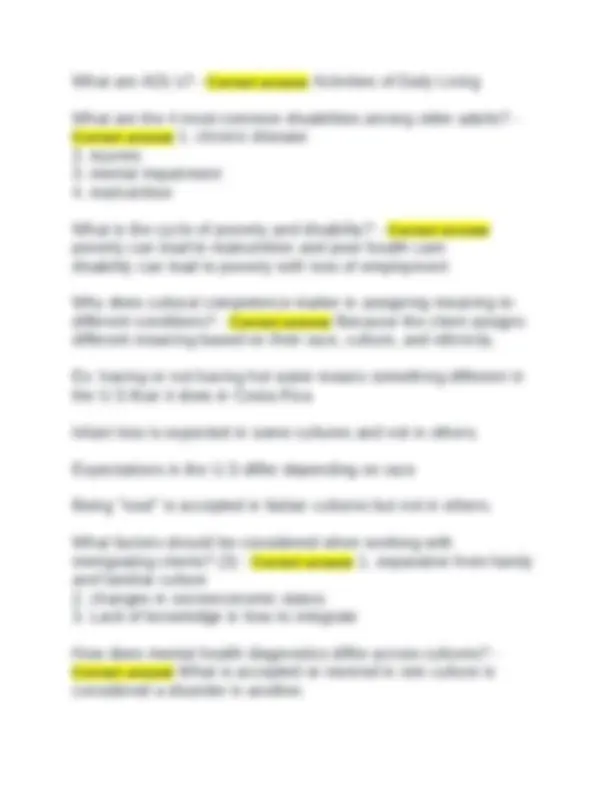
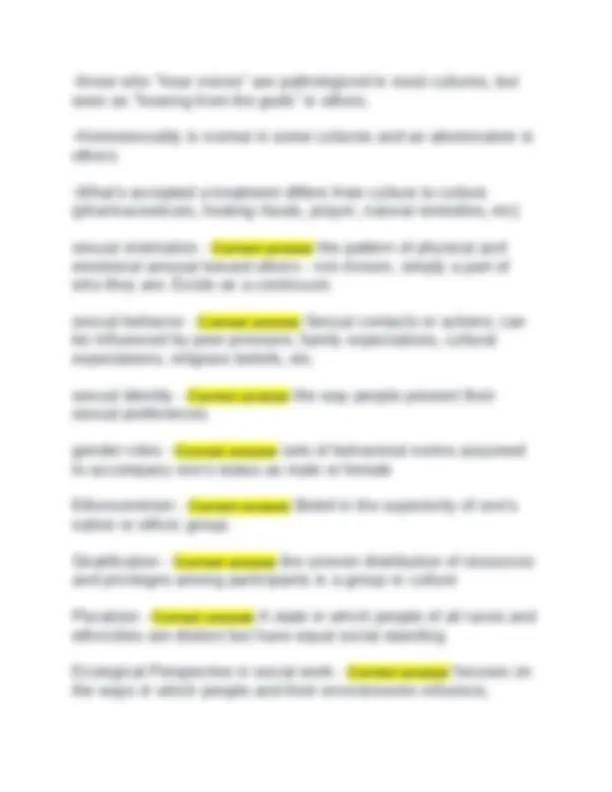
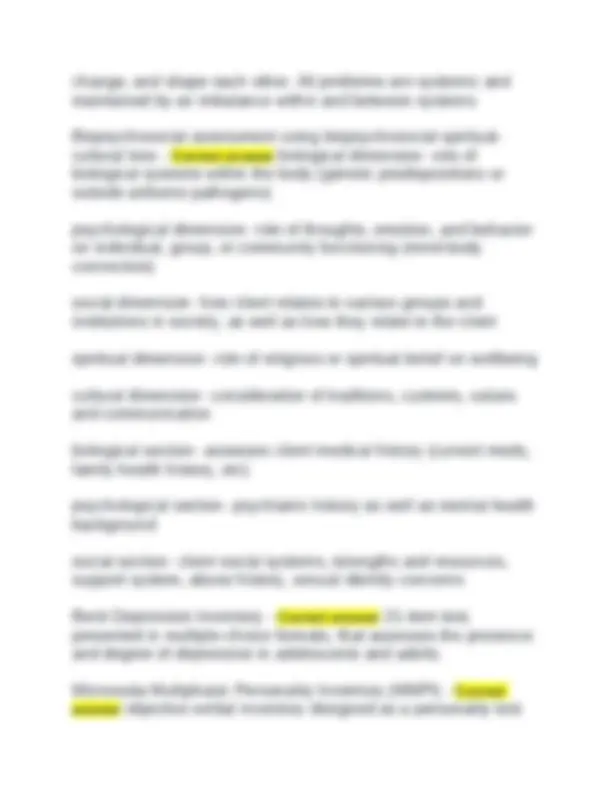
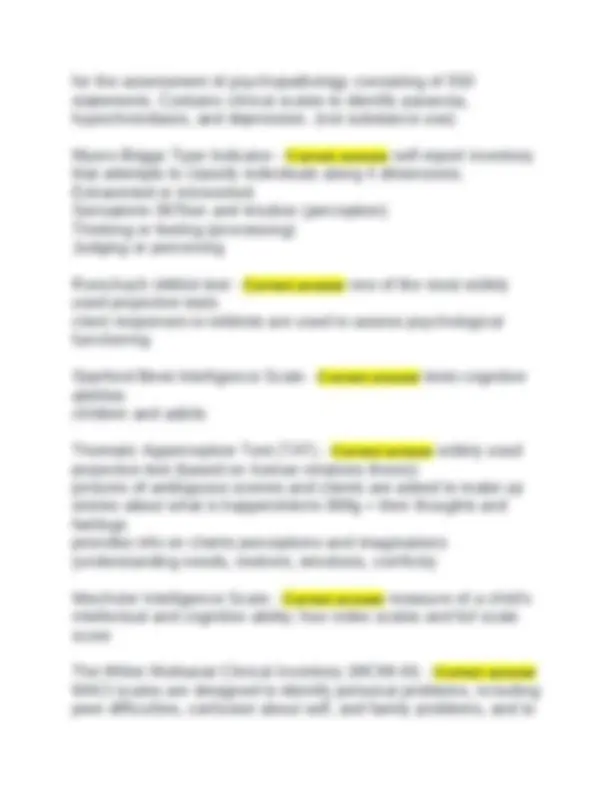
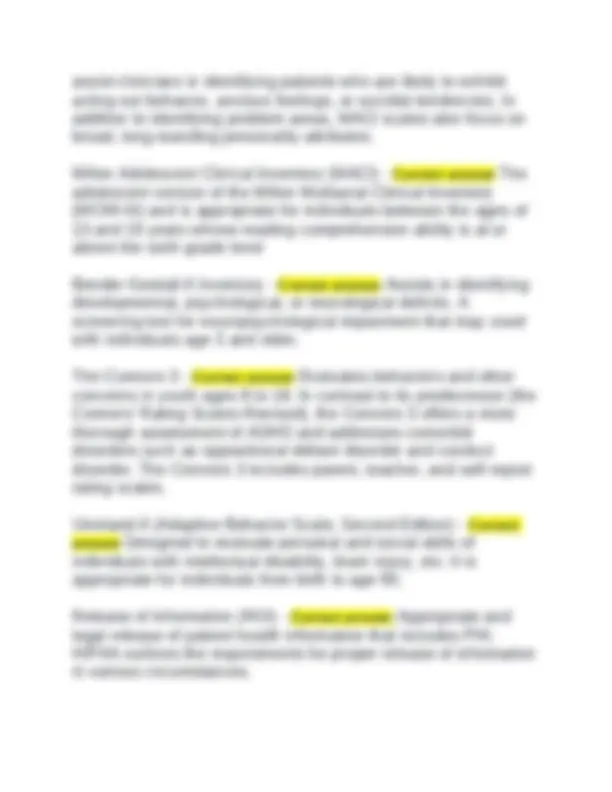
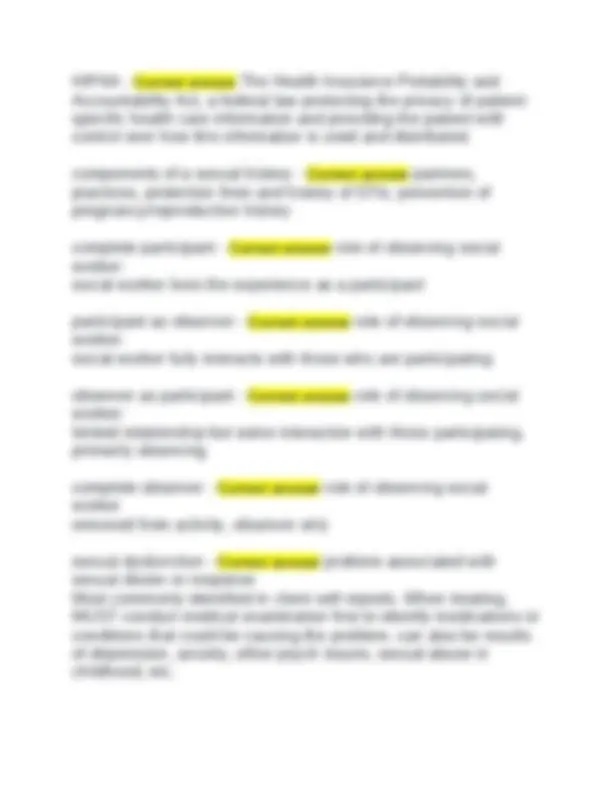
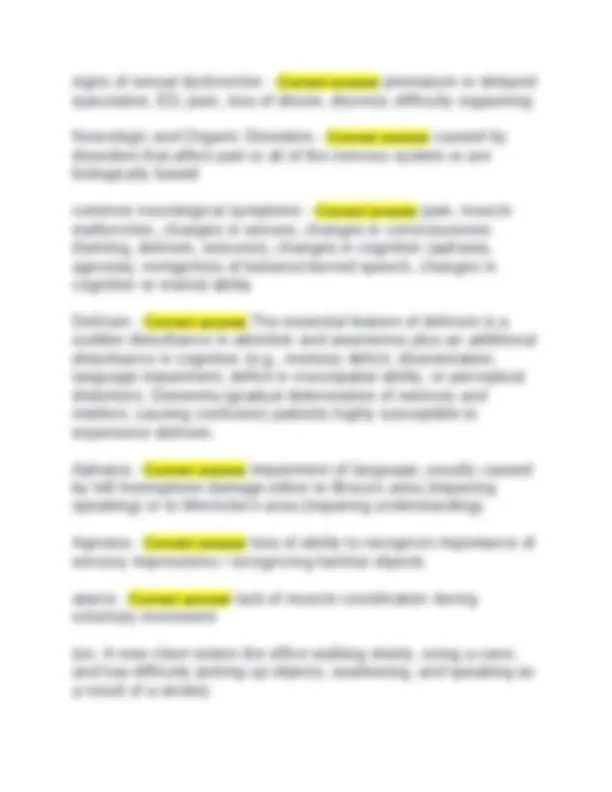
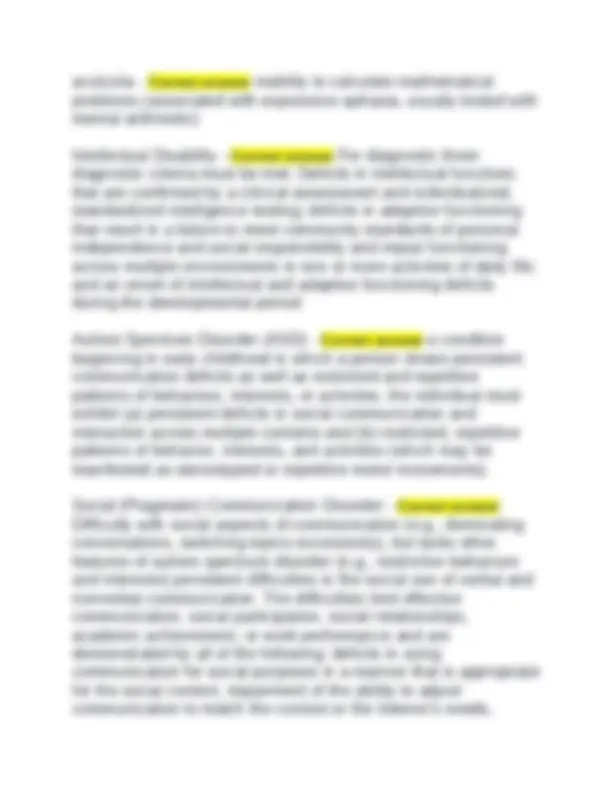
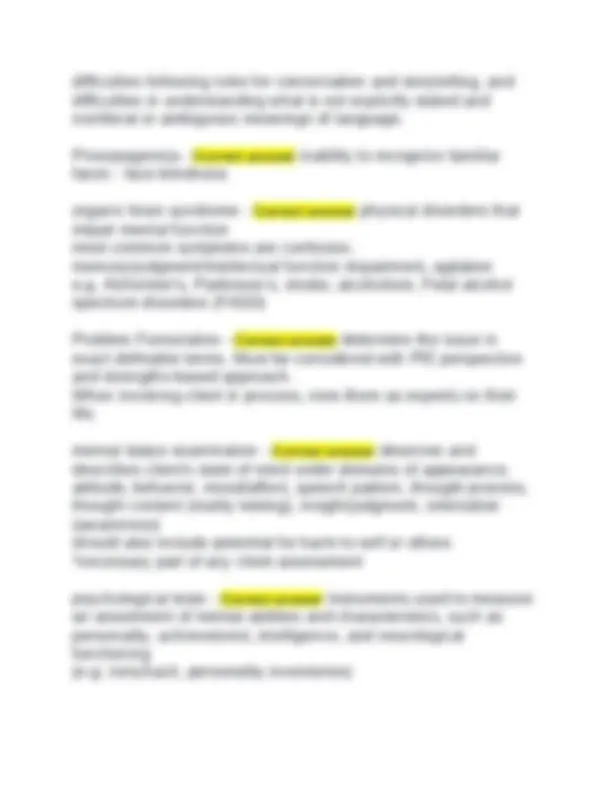
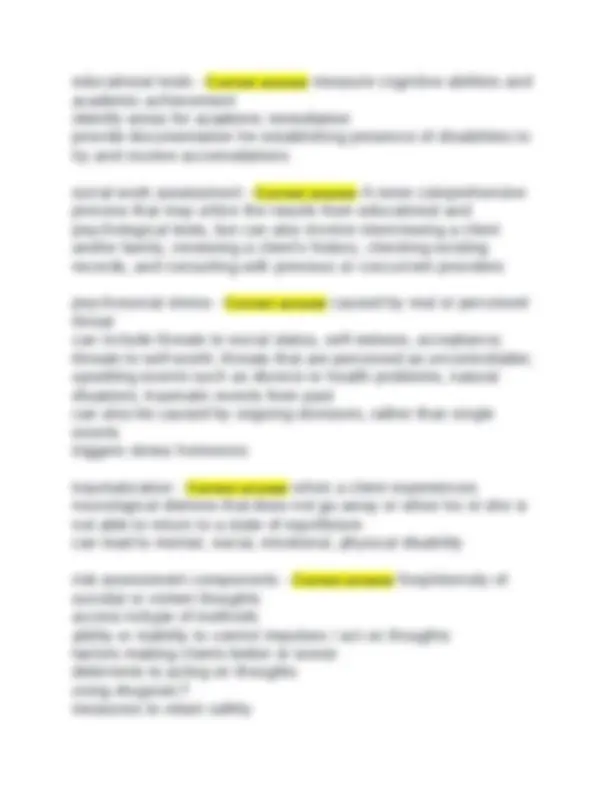
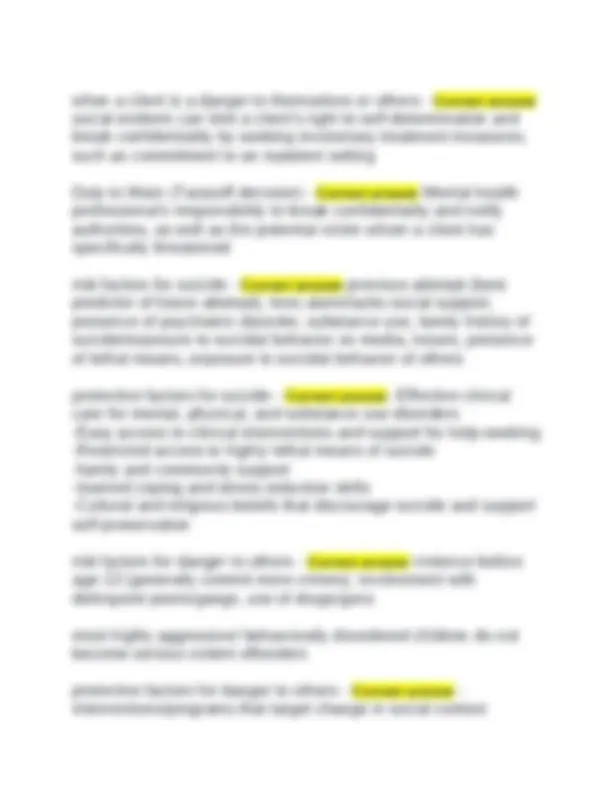
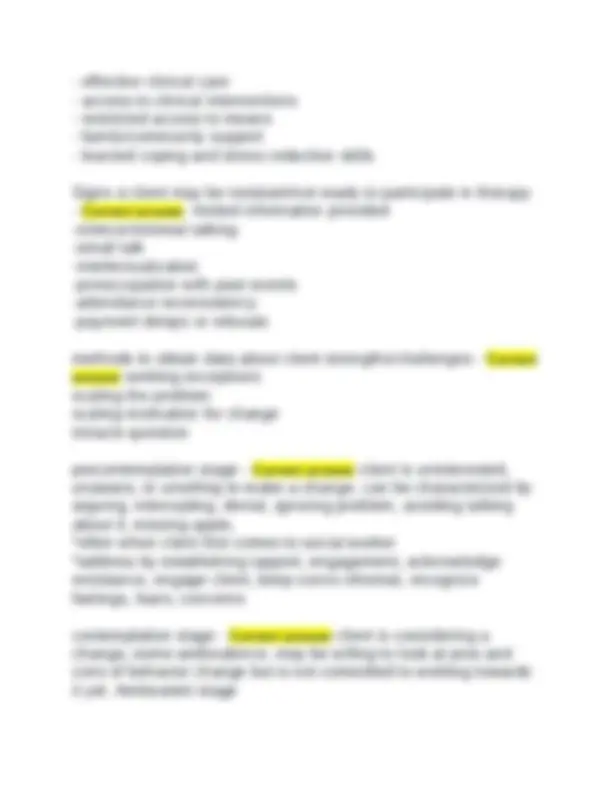
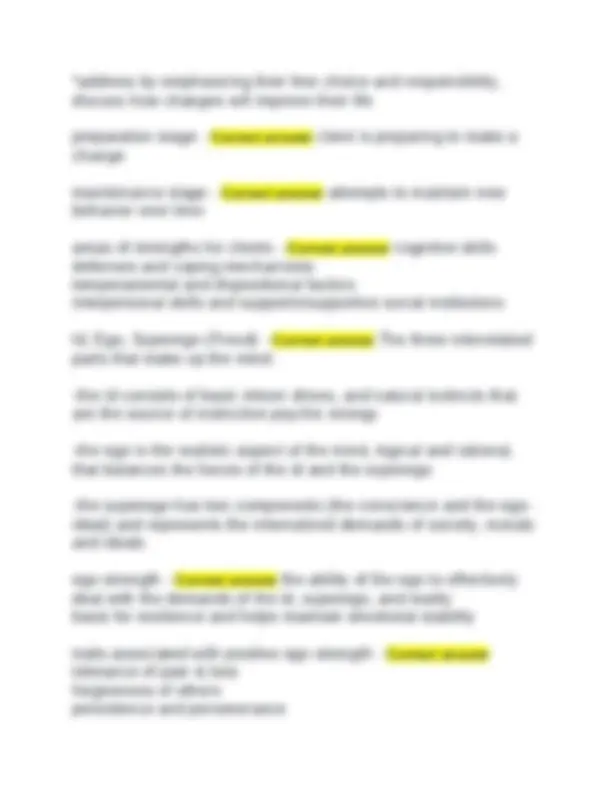
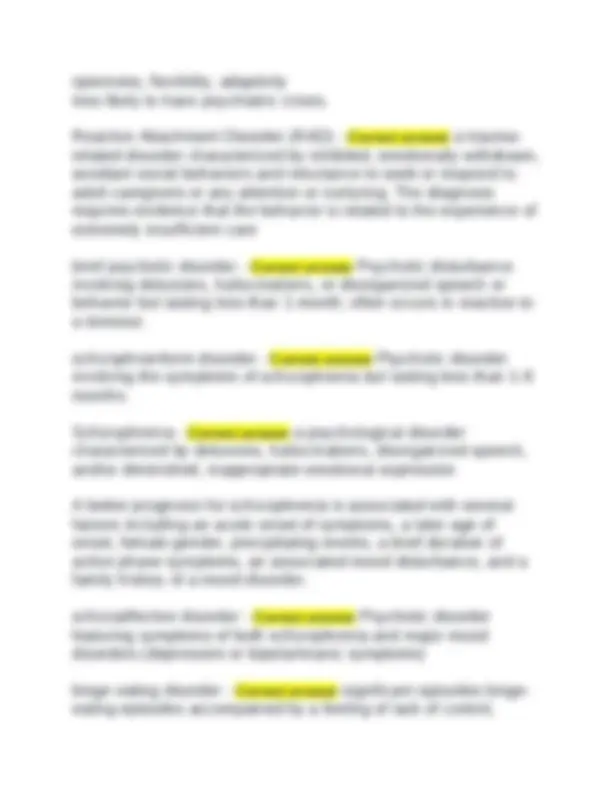
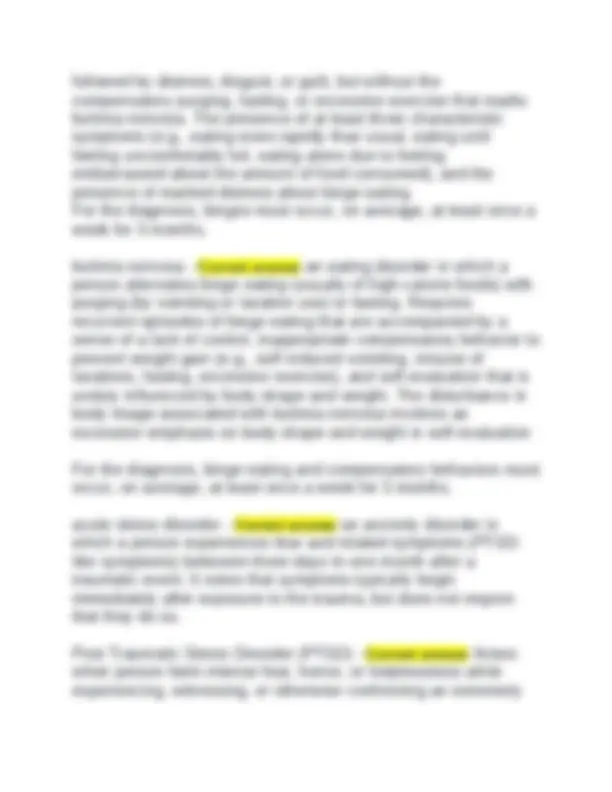
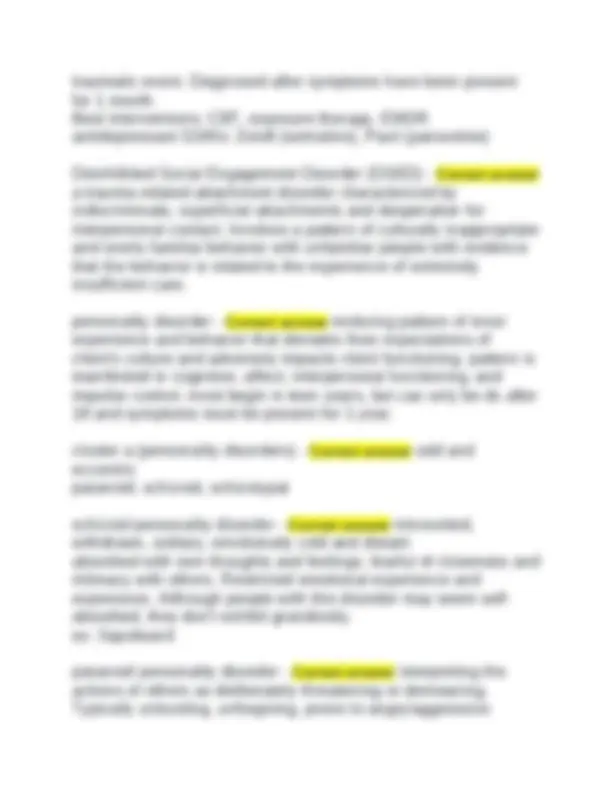
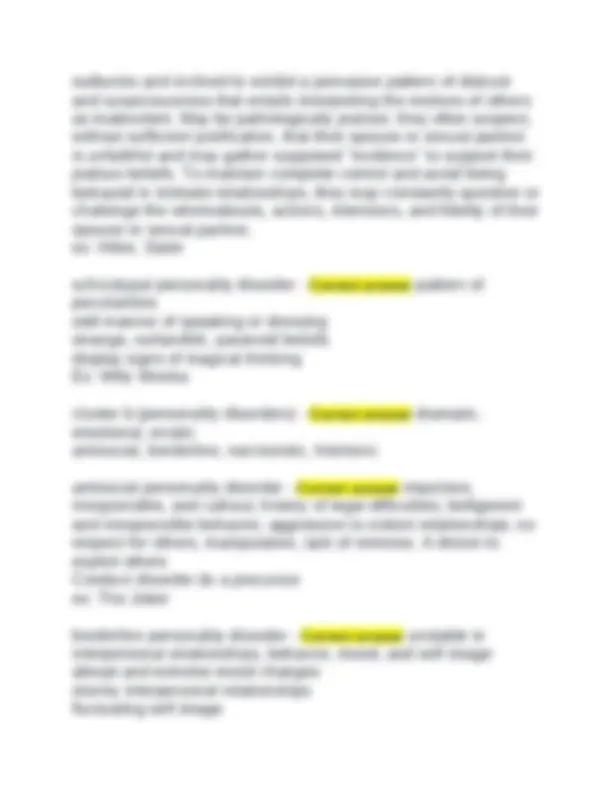
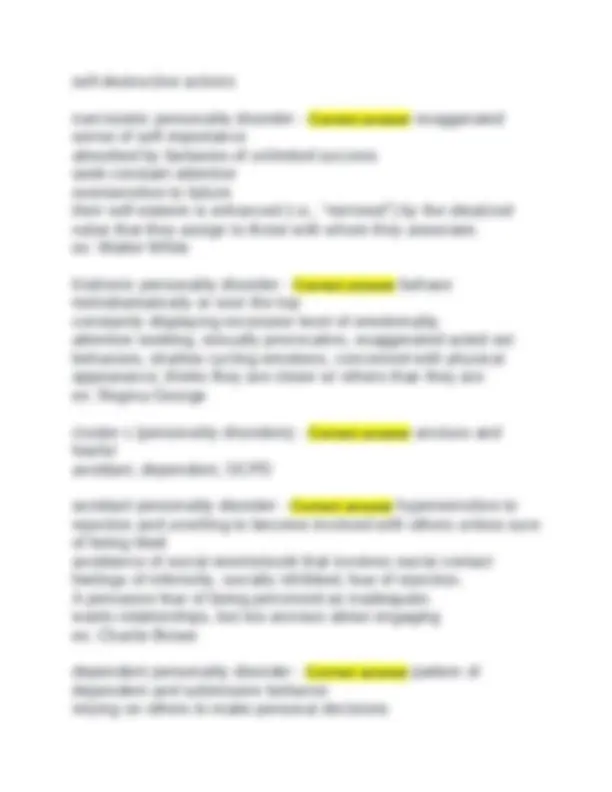
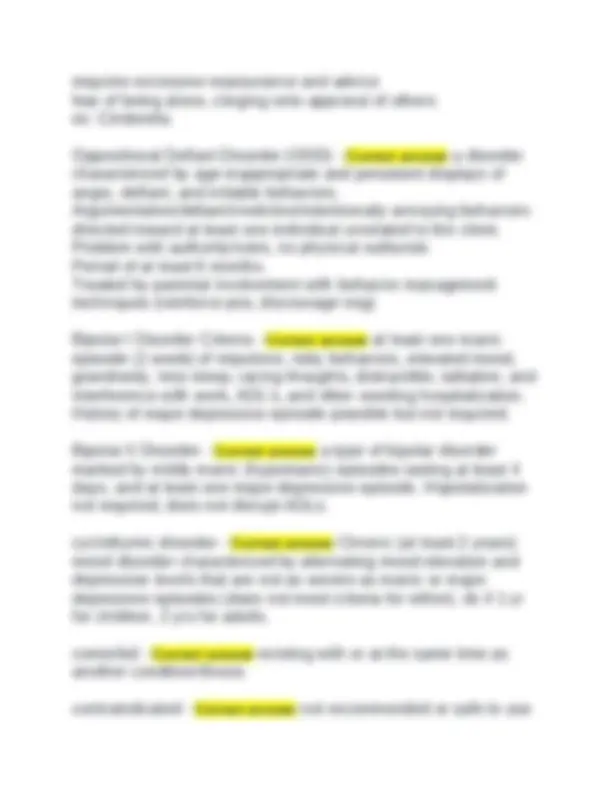
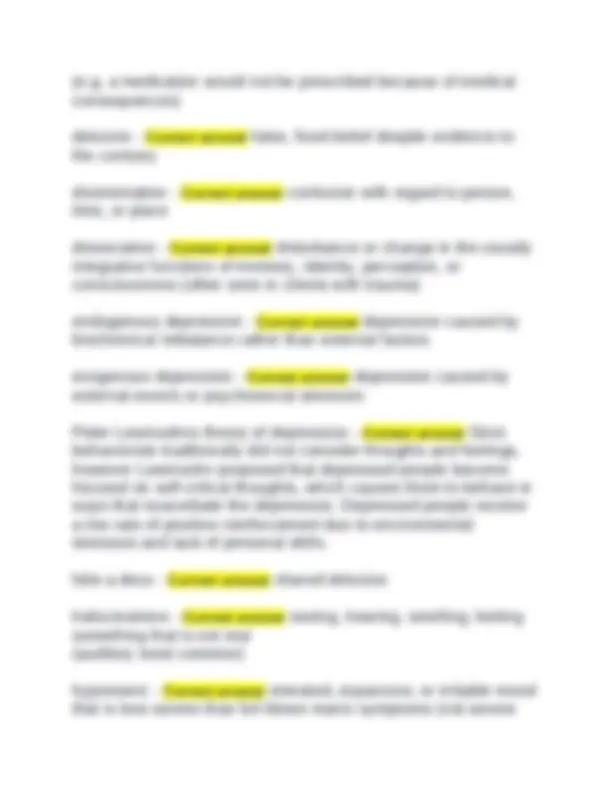
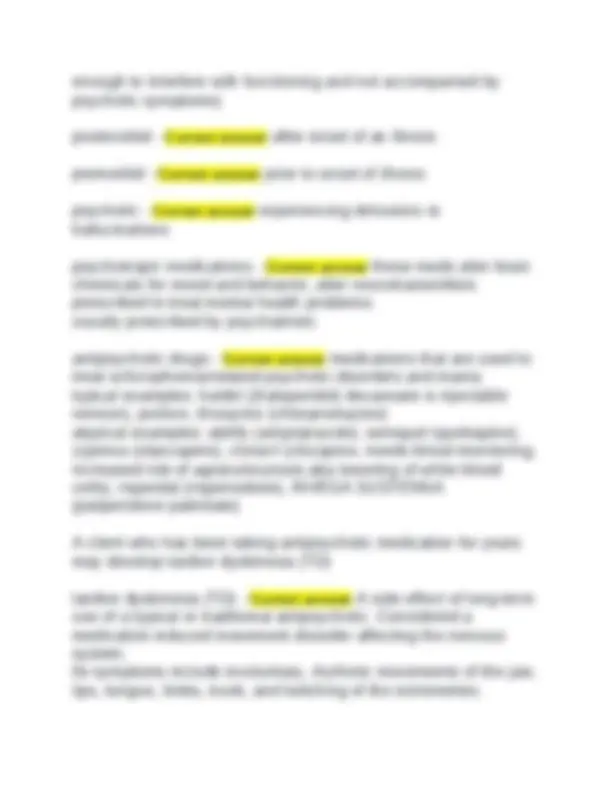
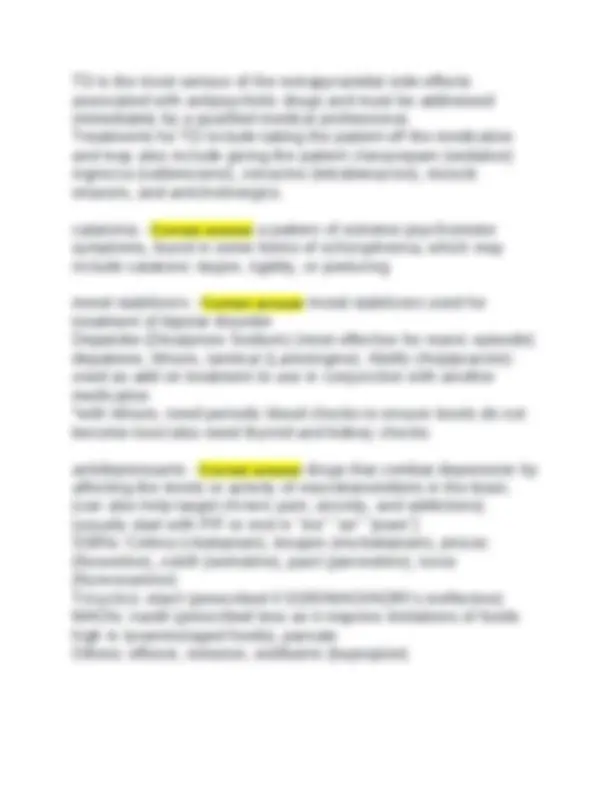
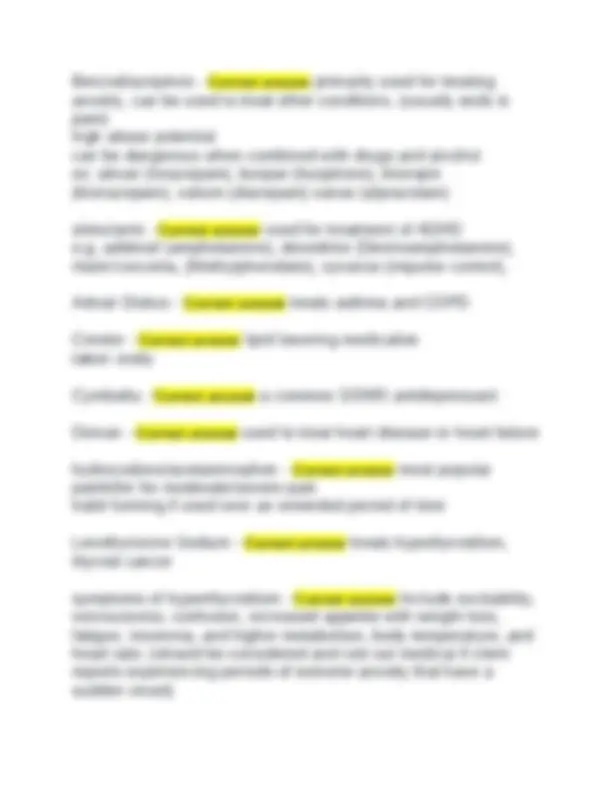
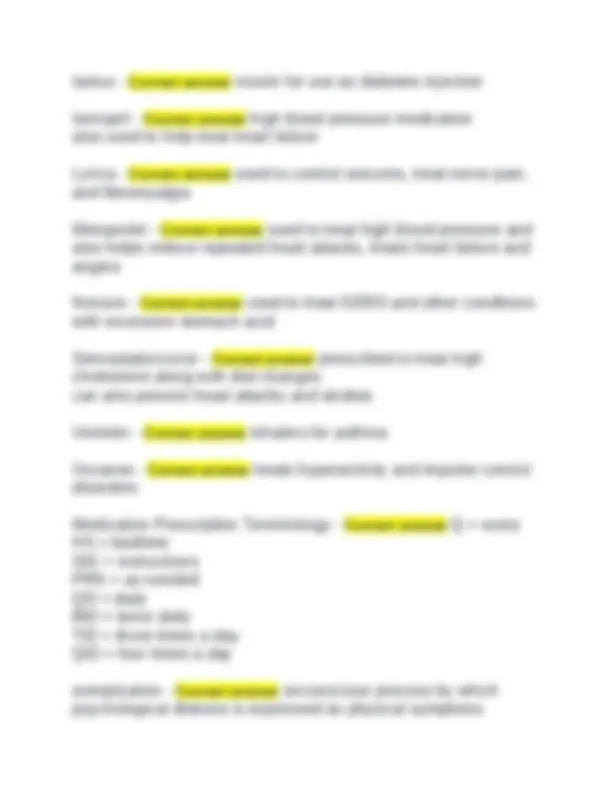
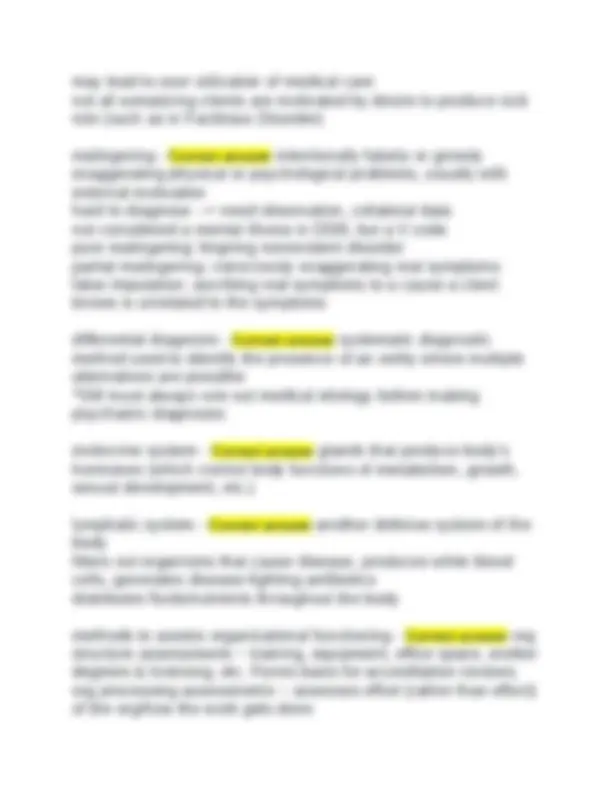
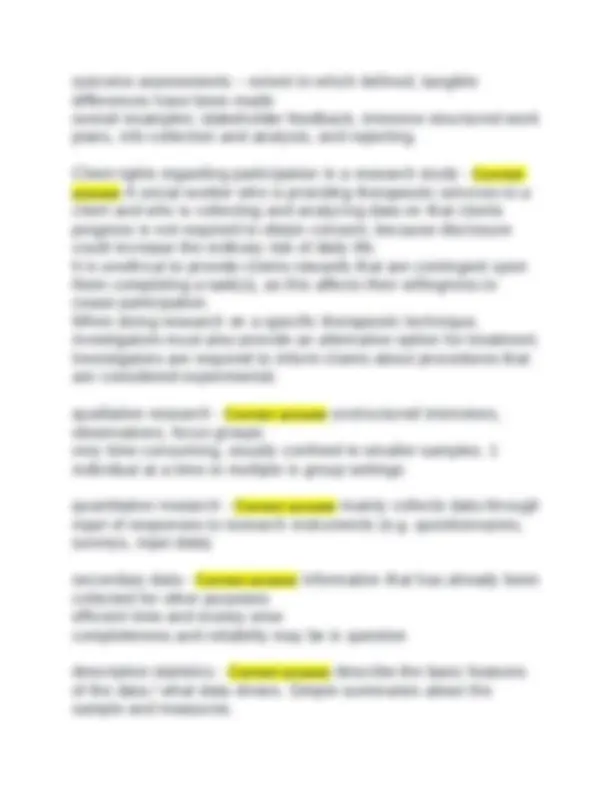
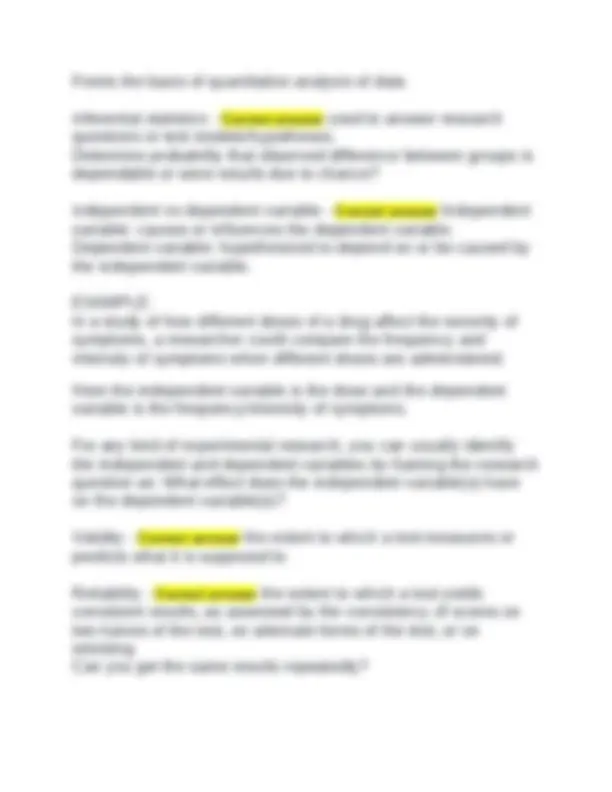
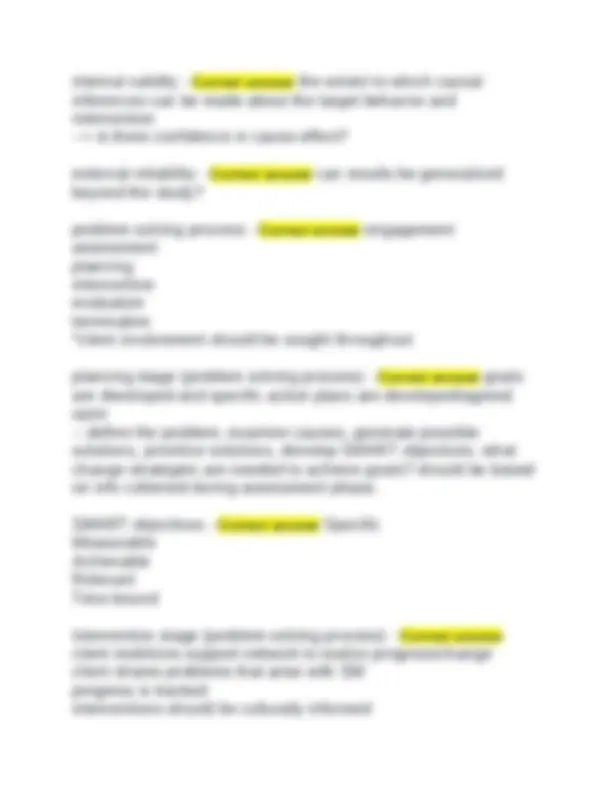


Study with the several resources on Docsity

Earn points by helping other students or get them with a premium plan


Prepare for your exams
Study with the several resources on Docsity

Earn points to download
Earn points by helping other students or get them with a premium plan
Community
Ask the community for help and clear up your study doubts
Discover the best universities in your country according to Docsity users
Free resources
Download our free guides on studying techniques, anxiety management strategies, and thesis advice from Docsity tutors
ASWB LCSW Complete Exam Prep – 2024 |800 Questions with Answers and Rationales. ASWB LCSW Complete Exam Prep – 2024 |800 Questions with Answers and Rationales.
Typology: Exams
1 / 178

This page cannot be seen from the preview
Don't miss anything!





























































































What is "Introjection" as a defense mechanism? - Correct answer Considered the most primitive, Internalizing outside influences as your own identity. (focus on identity, commonly seen in adolescents) Examples: -in severe depression- hatred turns toward self -A child takes on their parent's words, characteristics, or beliefs as their own to maintain connection -a trauma survivor takes on a victim identity -a kid "channels" his big brother's characteristics to stand up to a bully -kid internalizes ideas of someone else - "I cant cry it's weak." opposite of projection obsessive-compulsive personality disorder - Correct answer OCPD
Dx if at least 6+ yrs old, and "explosion" occurs 2 or more times a week for at least 3 months (OR child has had 3 incidents of impulsive/uncontrollable physical injury/property destruction in the last year) Conduct Disorder (CD) - Correct answer a pattern of repetitive behavior in which the rights of others or social norms are violated. Bullying, intimidating, truancy, lack of remorse or empathy, premeditated harmful behaviors, theft, aggression toward people or animals, destruction of property, theft, serious transgression of rules Occuring within a 1-year period (with at least one symptom present for 6 months straight), and onset before age 13. Leads to antisocial personality disorder after 18. Disruptive Mood Dysregulation Disorder (DMDD) - Correct answer a depressive disorder in children characterized by persistent irritability and frequent episodes of out-of-control behavior. Involves severe, recurrent temper outbursts with a persistent/chornic irritable and angry mood between outbursts on most days. Lasting at least 1 year with no more than 3 month periods between symptom episodes On average, outbursts occur 3+ times/wk Age of onset before 10 yrs Diagnosed between 6-18 yrs What does KSA stand for? - Correct answer knowledge, skills, and abilities What is the order of the Social Work process? (6) - Correct answer
Developmental Theory - Correct answer Human development is a complex interaction of biological, psychological, and social factors. Development occurs in defined, age-related stages that build upon one another. Social Behavioral Theory - Correct answer Human behavior is learned when clients interact with the environment through association, reinforcement, and imitation. Behavior and can be changed through techniques such as classical and operant conditioning. Humanistic Perspective - Correct answer Each client is responsible for their own choices and have the capacity to change themselves. Human behavior is driven by a desire for growth, meaning, and competence. Behaving in ways inconsistent to this causes anxiety. Why does social development matter? - Correct answer Human beings are inherently social. Developing competencies in this domain enhances a person's mental health, success in work, and the ability to achieve life tasks. In order of research development, who were the prominent theorists of developmental research and their associated research? (5) - Correct answer 1. Sigmund Freud (Psychosexual)
Maladaption: Lack of vision or ambition What are the crisis and outcomes of the 5th psychosocial stage of development? - Correct answer 5. Adolescent: 13-20's Crisis: Identity Vs. Role Confusion Completion: Passion, sense of self Maladaption: Fanaticism or lack of direction What are the crisis and outcomes of the 6th psychosocial stage of development? - Correct answer 6. Young Adulthood: 20's -early 40's Crisis: Intimacy Vs. Isolation Completion: Connection and affiliation Maladaption: Promiscuity and/or loneliness What are the crisis and outcomes of the 7th psychosocial stage of development? - Correct answer 7. Middle Adulthood: 40's-60's Crisis: Generativity Vs. Stagnation Completion: Production, part of a bigger picture Maladaption: over extension and/or unproductive What are the crisis and outcomes of the 8th psychosocial stage of development? - Correct answer 8. Late Adulthood: Late 60's+ Crisis: Integrity Vs. Despair Completion: Wisdom Maladaption: Disdain, lack of fulfilment What are the most prominent markers of social and emotional development? (3) - Correct answer 1. The ability to pay attention
How many stages are in Piaget's theory of cognitive development? - Correct answer 4 What are the 4 stages of cognitive development and their respective ages? - Correct answer 1. Sensorimotor (birth-2yrs)
(In other words, it's both and cannot be separated) How many levels of cognition are there? - Correct answer 6 What are the 6 levels of cognition? - Correct answer 1. Knowledge
What are the levels in the Moral Development Theory? (3) - Correct answer 1. Pre-conventional (Elementary, before 9yo)
individual and their environment, not internal thoughts or feelings. A change in behavior creates a change in undesired feelings, not the other way around. (right acting leads to right feeling...build self-esteem by doing esteemable things, etc.) What is the focus of behaviorism? - Correct answer Observing and controlling behavior What are the two fundamental classes of behavior? - Correct answer -Respondent (behavior that occurs as an automatic response to a stimulus (anxiety, crying, blinking, etc.) -Operant (voluntary behavior (walking, talking) that is controlled by its consequences in the environment) What are the best-known applications of behavior modification? - Correct answer sexual dysfunctions, phobic disorders, elimination disorders, compulsive behaviors (overeating or smoking) and training persons with intellectual disabilities and/or Autism Spectrum Disorder What are the advantages of client self-monitoring their own behaviors? - Correct answer inexpensive compared to residential care, practical, empowering, gained insight What are the disadvantages of client self-monitoring their own behaviors? - Correct answer inadequate or inaccurate information, bias or lack of insight, resistance to collecting information or patterns Who developed respondent/classical conditioning? - Correct answer Pavlov
What is respondent/classical conditioning - Correct answer Pairing a neutral stimulus with an unconditioned or automatic stimulus so that the neutral stimulus eventually elicits the same response. (Pavlov's dogs. The food is the stimulus, salivating is the automatic response, the bell is the neutral stimulus. Pairing the bell with food is the conditioning. Eventually, the bell elicits salivation on its own.) Who developed Operant Conditioning? - Correct answer Skinner What is operant conditioning? - Correct answer a type of learning where behavior is controlled by consequences, both positive and negative, reward and punishment Antecedent --> Response/Behavior --> Consequence What are the four operant techniques? - Correct answer 1. Positive reinforcement
(also exposure therapy, but with levels and in real life, not imagined. What is "modeling" in therapy? - Correct answer A behavior modification technique where the behavior is modeled by the therapist (boundaries, direct communication, conflict management, ect.) Funneling therapeutic technique - Correct answer Funneling (a.k.a. narrowing the focus) involves asking a series of questions designed to help a client describe their concerns or situation with more specificity. Fogging therapeutic technique - Correct answer A technique used to defuse attacks by angry clients who are verbally aggressive. With fogging, you offer no resistance to the client, avoid responding to them with either anger or defensiveness, and calmly acknowledge that they may have legitimate reasons for their anger, criticism of you, etc., that their perceptions of the situation that has upset them are correct, etc. When the client sees that their verbal attacks have no effect on you, they may abandon them mirroring (Therapeutic Communication) - Correct answer Mirroring generally involves speaking at a client's pace and in a way that matches her nonverbal behavior. It can be effective for bringing attention to aspects of a client's behavior and for reinforcing desired behaviors. For example, when using mirroring to reduce a client's defensiveness, you would follow her nondefensive communications with verbal and nonverbal behavior that mirrors (imitates) theirs. What is Rational Emotive Therapy (RET)? - Correct answer A form of cognitive-behavioral therapy that targets a client's irrational
beliefs through rational reevaluation, perspective shifts, and rational arguments. Therapist teaches the client to do the same to counter and replace self-defeating thought processes. What is "shaping" in operant conditioning? - Correct answer Rewarding increasingly specific behaviors towards desired behavioral goal What is "Systematic Desensitization" and how is it implemented?
What are signs of healthy growth and development in young children ages 4-6? - Correct answer Physical—grows at a slower rate; improving motor skills; dresses self, toilet trained Mental—begins to use symbols; improving memory; vivid imagination, fears; likes stories Social-Emotional—identifies with parent(s); becomes more independent; sensitive to others' feelings Communication—give praise, rewards, clear rules Health—keep immunizations/checkups on schedule; promote healthy habits (good nutrition, personal hygiene, etc.) Safety—promote safety habits (use bike helmets, safety belts, etc.) Examples of age-specific care for young children:Involve parent(s) and child in care—let child make some food choices Use toys and games to teach child and reduce fear Encourage child to ask questions, play with others, and talk about feelings Help parent(s) teach child safety rules What are signs of healthy growth and development in older children ages 7-12? - Correct answer Physical—grows slowly until a "spurt" at puberty Mental—understands cause and effect, can read, write, do math; active, eager learner Social-Emotional—develops greater sense of self; focuses on school activities, negotiates for greater independence Communication—help child to feel competent, useful Health—keep immunizations/checkups on schedule; give information on alcohol, tobacco, other drugs, and sexuality Safety—promote safety habits (playground safety, resolving conflicts peacefully, etc.) Examples of age-specific care -Allow child to make some care decisions (in which arm do you want vaccination?) Build self-esteem—ask child to help with tasks, recognize his or her achievements, and so on
Guide child in making healthy, safe lifestyle choicesHelp parent(s) talk with child about peer pressure, sexuality, alcohol, tobacco, and other drugs Sexuality in infants and toddlers - Correct answer Children are sexual even before birth.-Males can have erections while still in the uterus, and some boys are born with an erection. -Infants touch and rub their genitals because it provides pleasure. -Little boys and girls can experience orgasm from masturbation, although boys will not ejaculate until puberty. -By about age 2, children know their own gender. They are aware of differences in the genitals of males and females and in how males and females urinate. Sexuality in children (age 3-7) - Correct answer -Preschool children may practice urinating in different positions. -They are highly affectionate and enjoy hugging other children and adults. They can imitate adult social and sexual behaviors, such as holding hands and kissing. -Many young children play "doctor" during this stage, looking at other children's genitals and showing theirs out of normal curiosity. -By age 5 or 6, most children become more modest and private about dressing and bathing. -Role play about being married or having a partner while they "play house." -Most sex play at this age happens because of curiosity. What is the basic trajectory of all spiritual development theories over the lifespan? (4) - Correct answer 1. Egocentric- -Individuals unwilling to accept a will greater than their own. Behavior is chaotic, reckless, lacks empathy, and defies rules. Most consistent with young children, but adults who never move through this phase often engage in criminal activity.